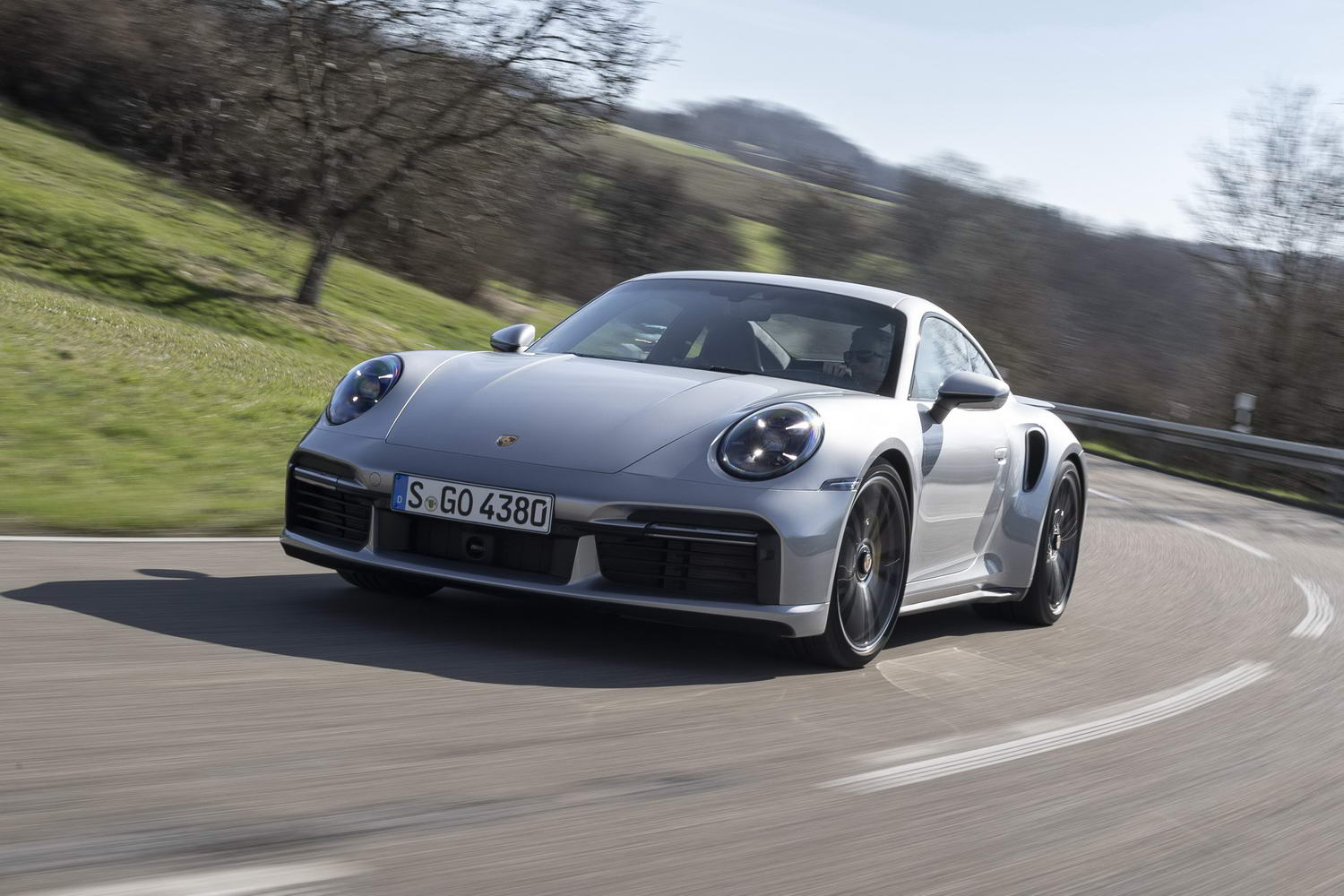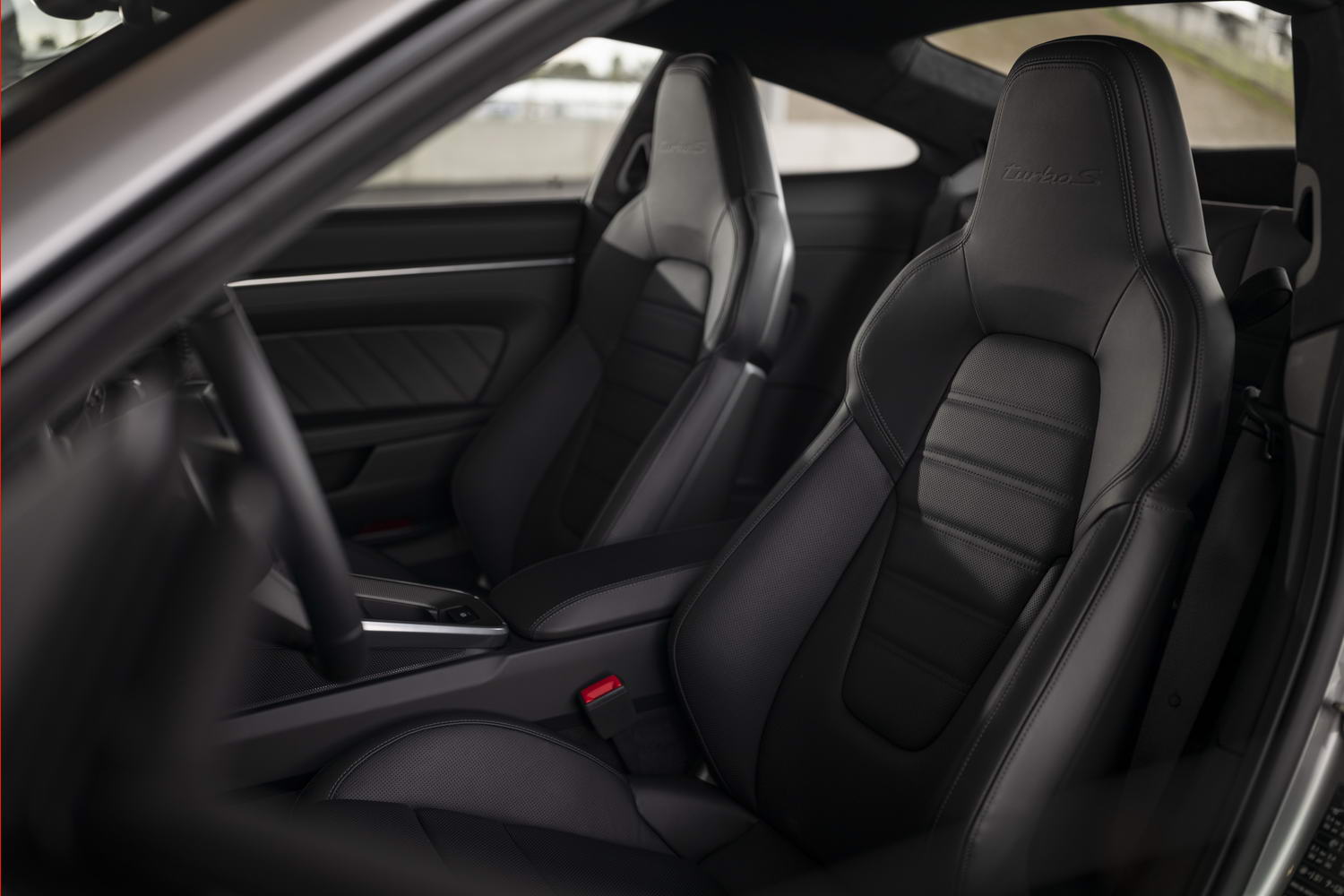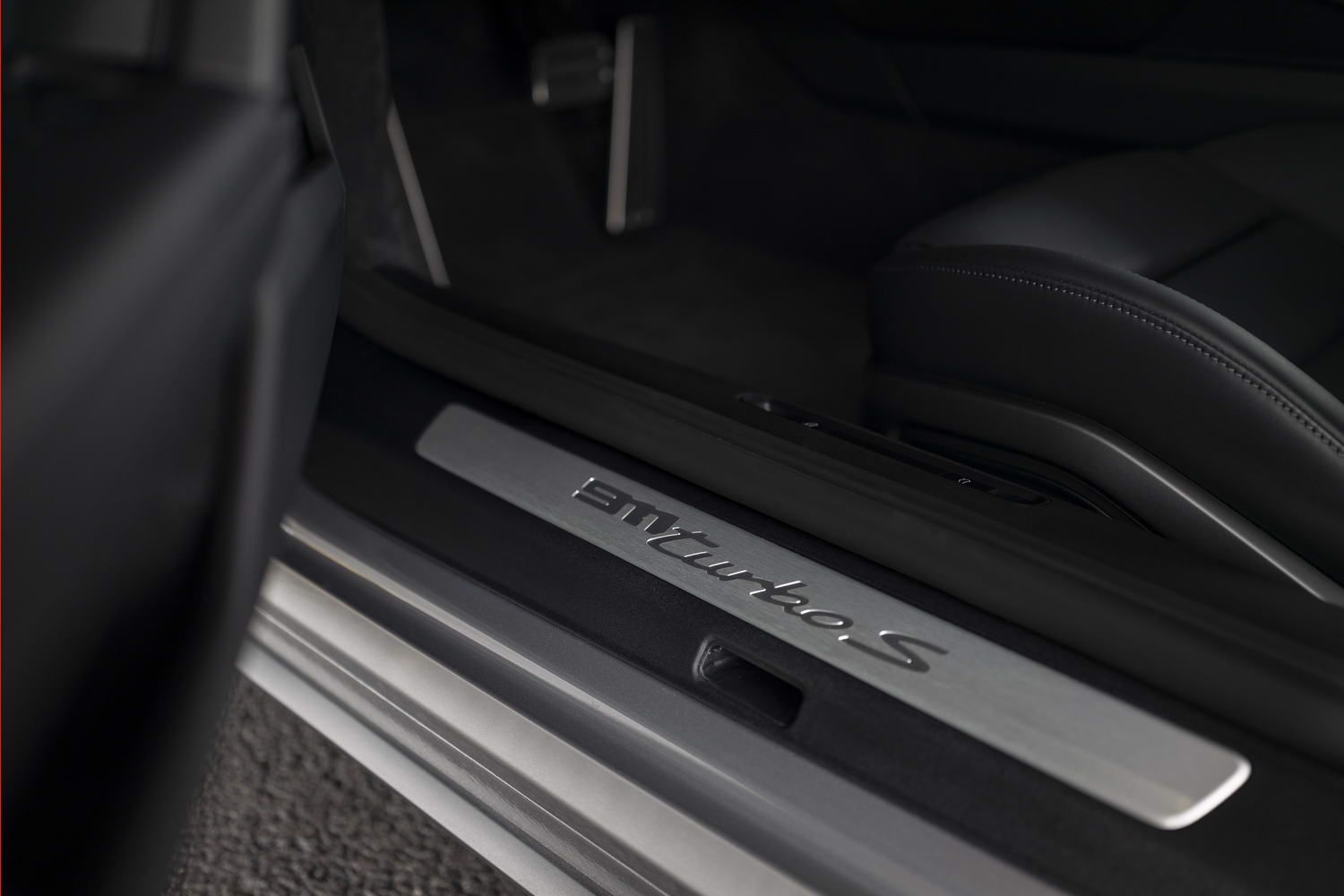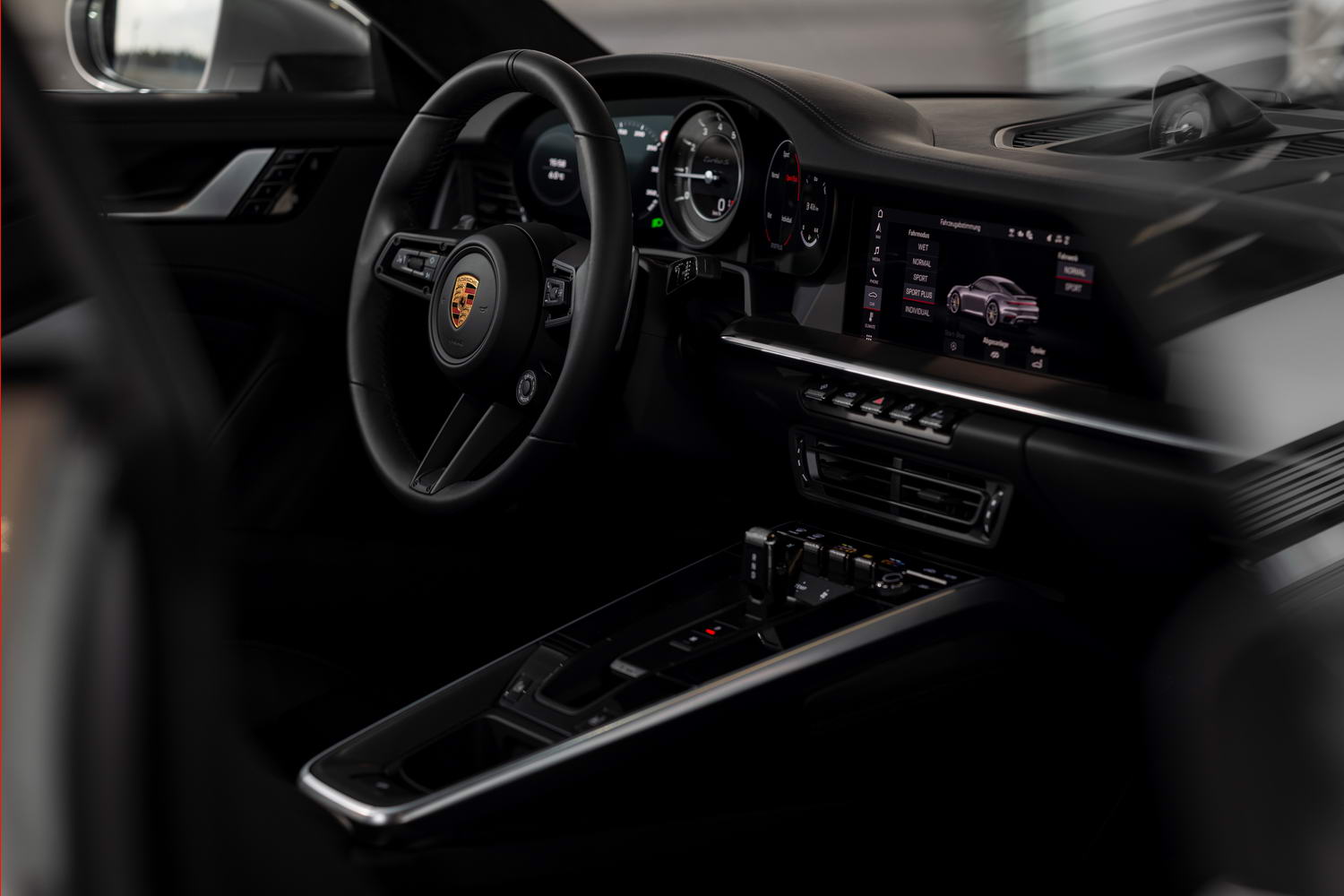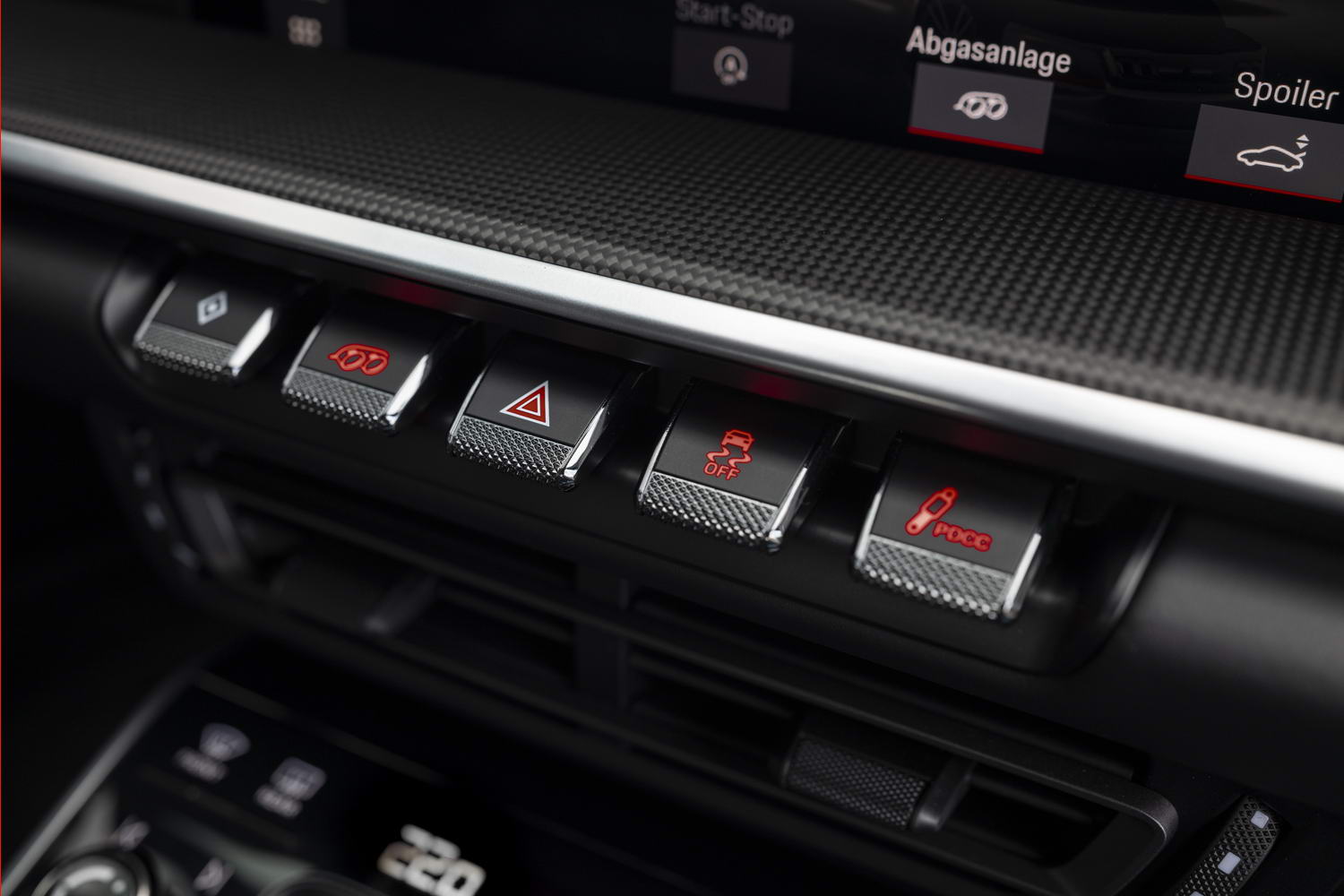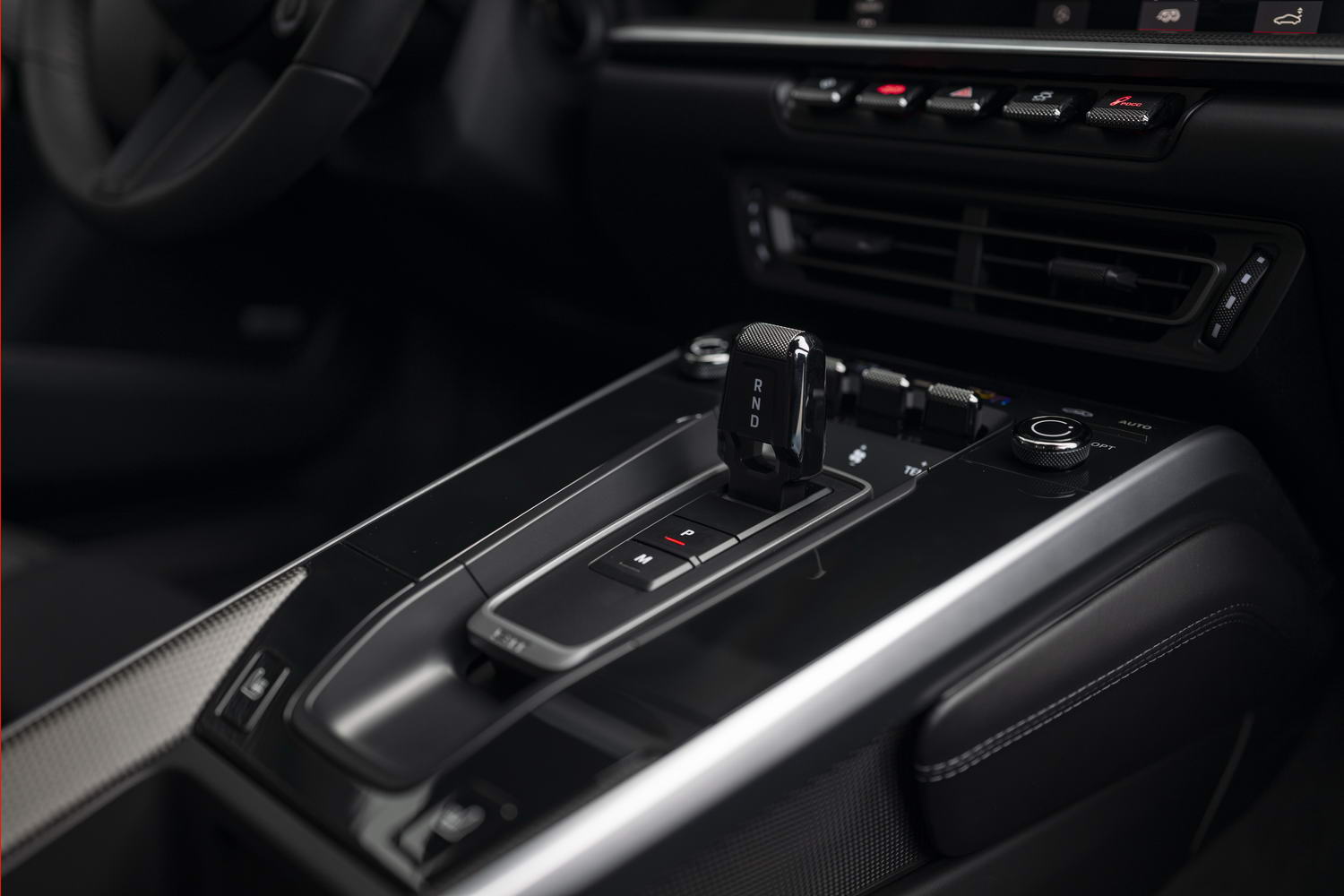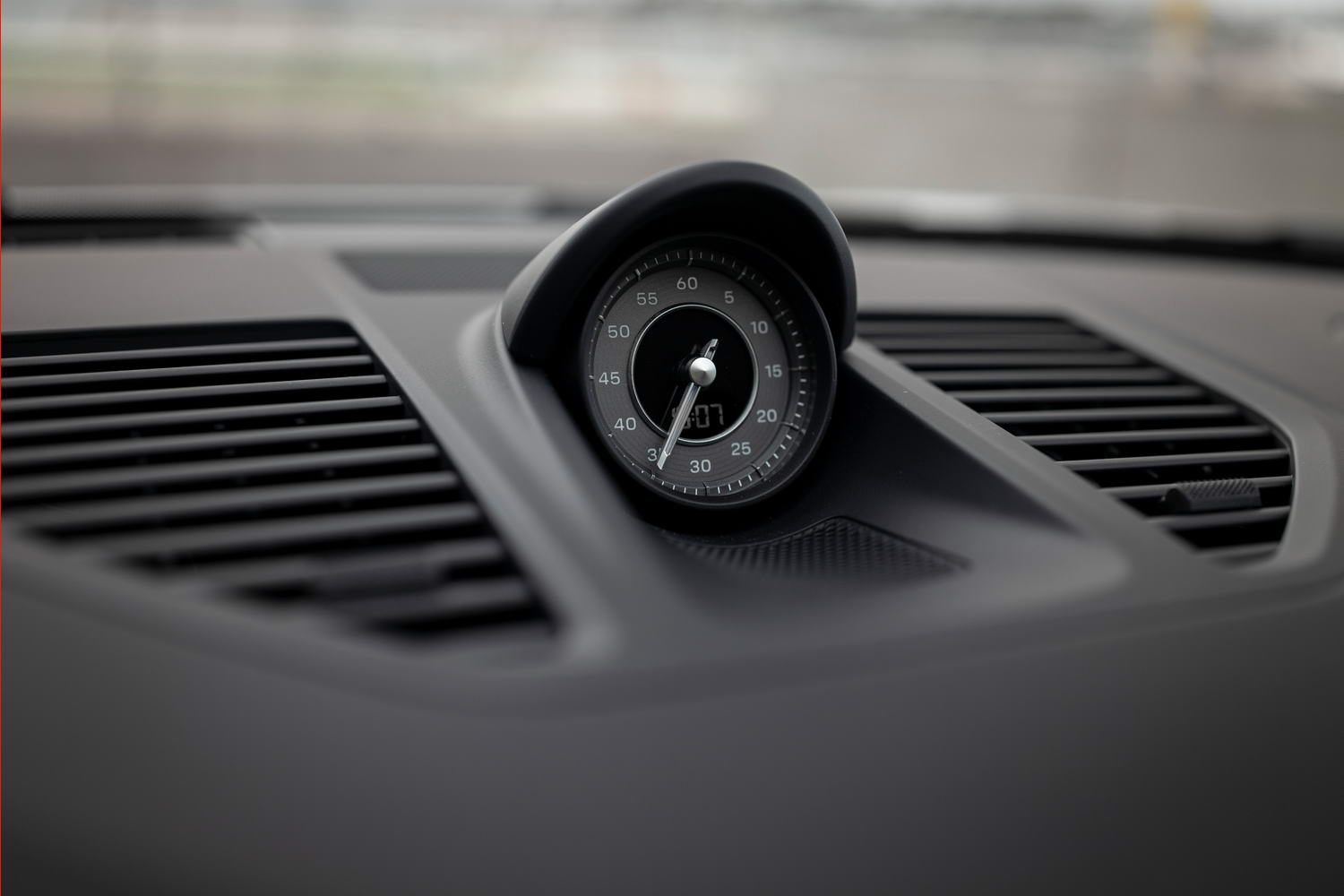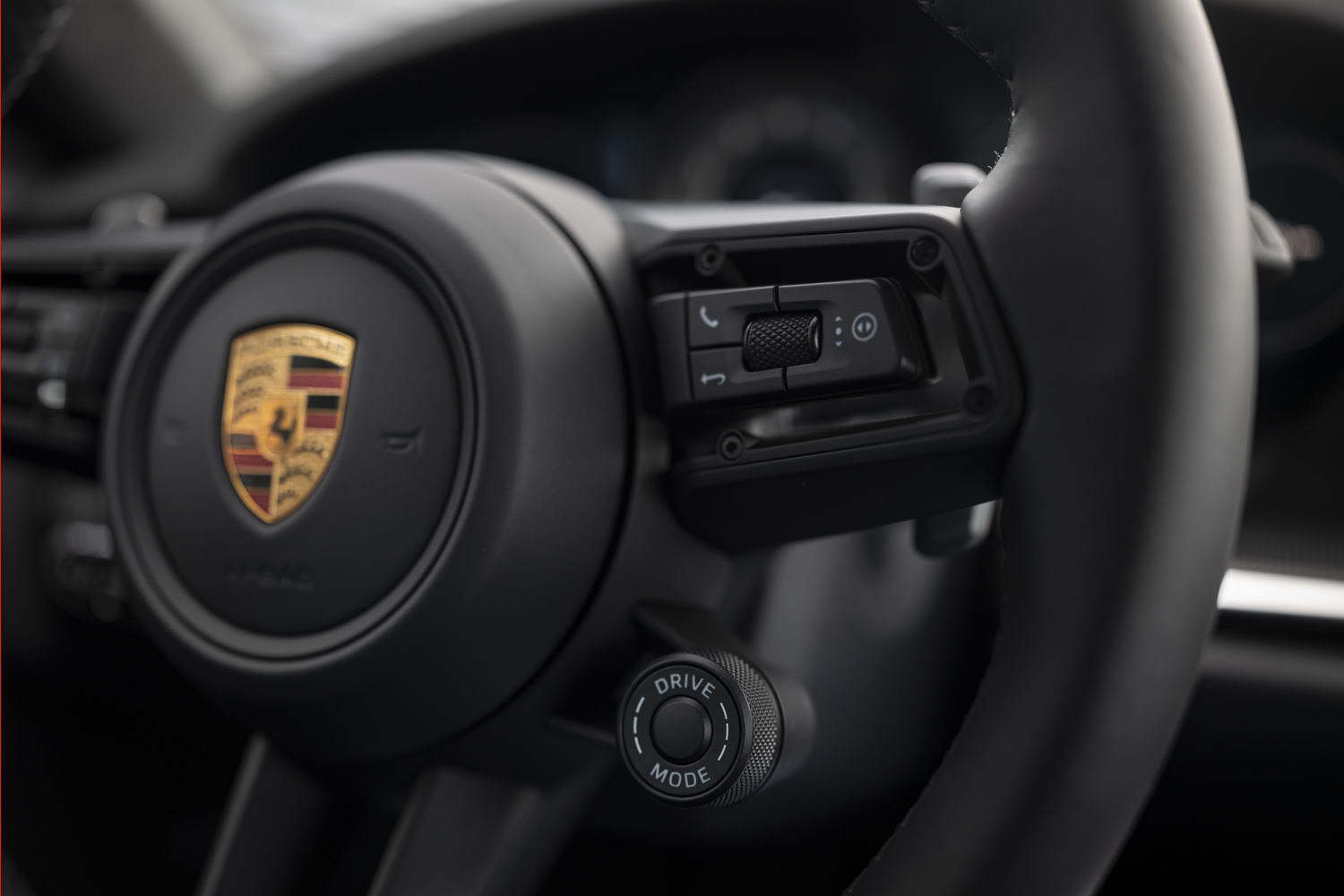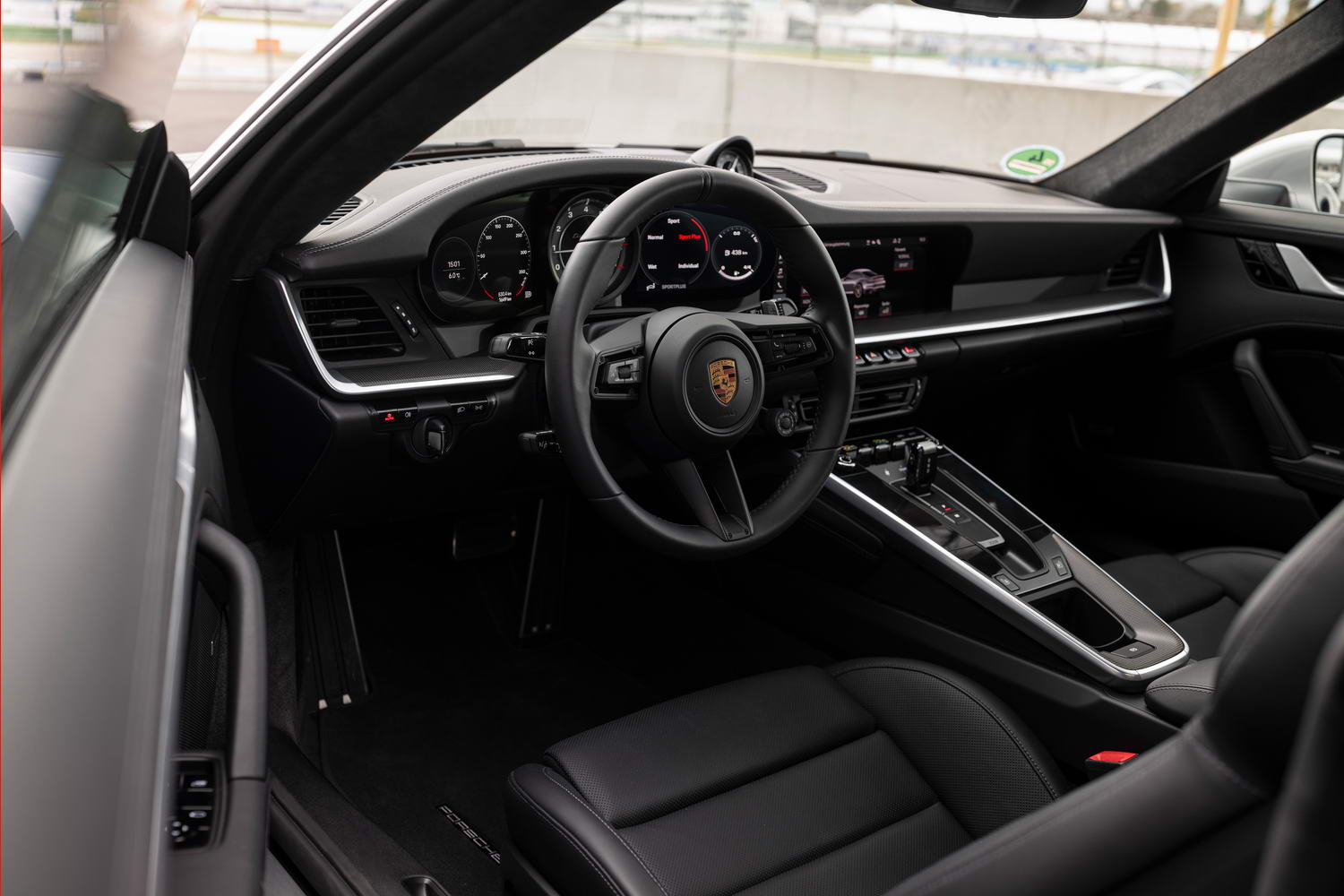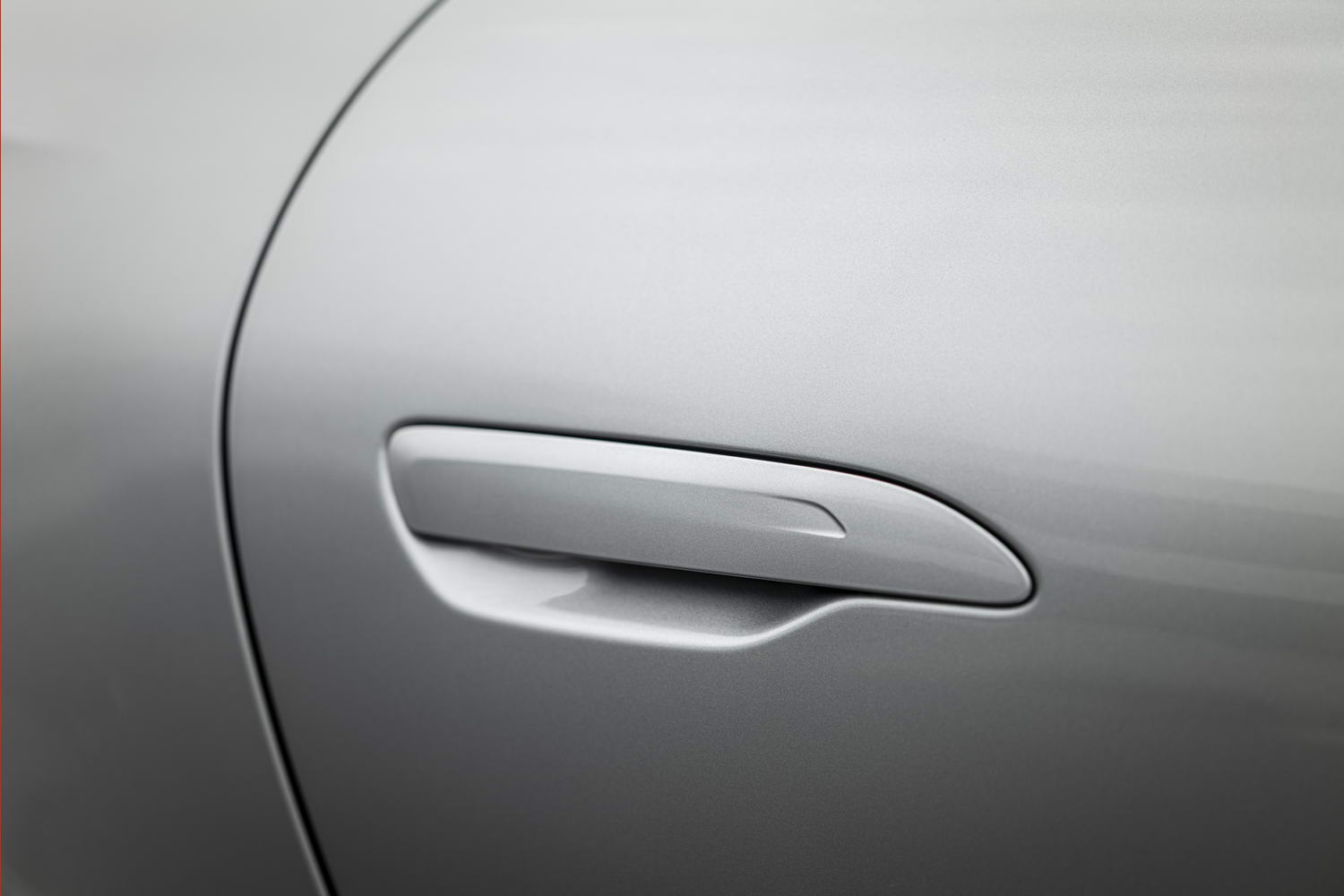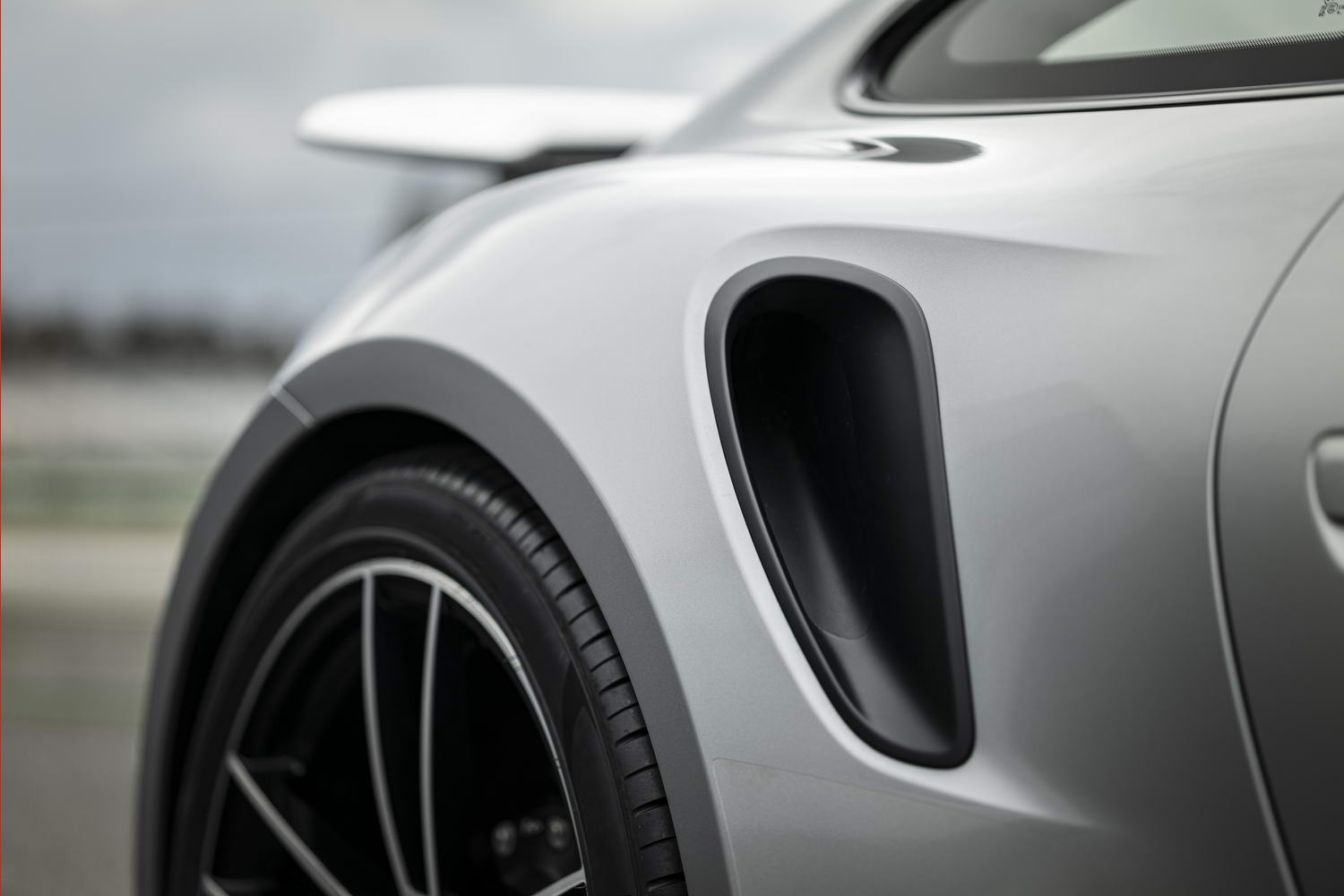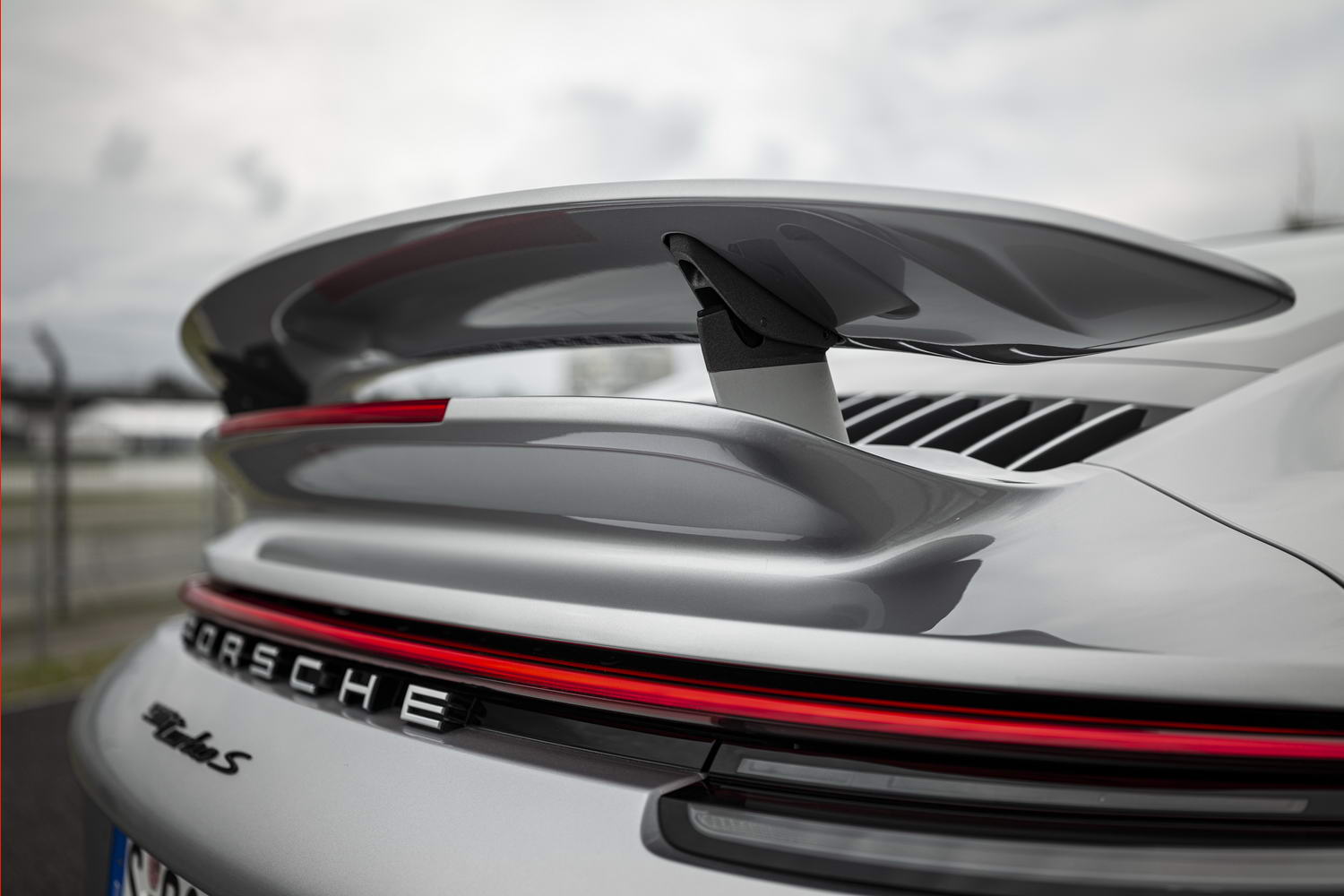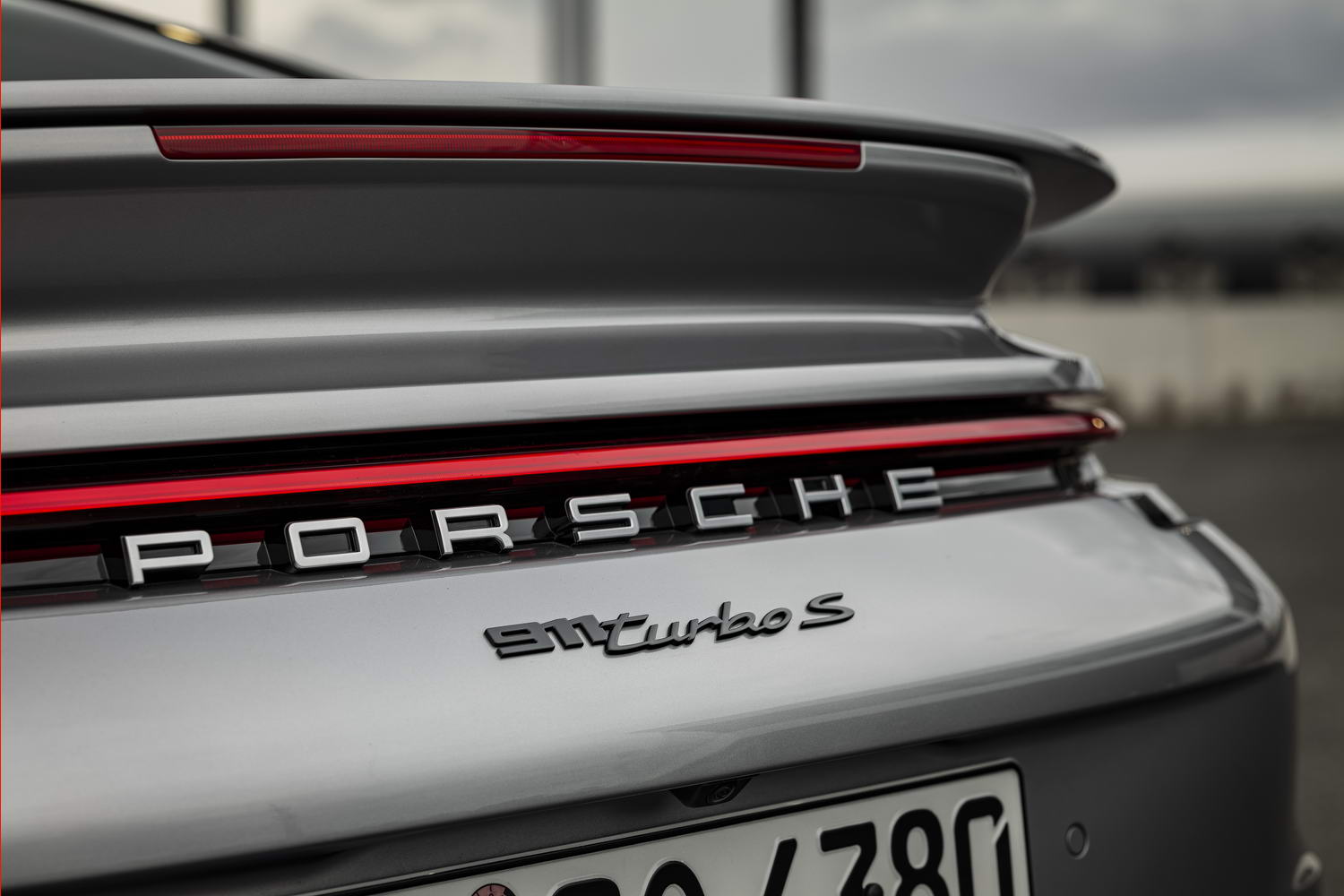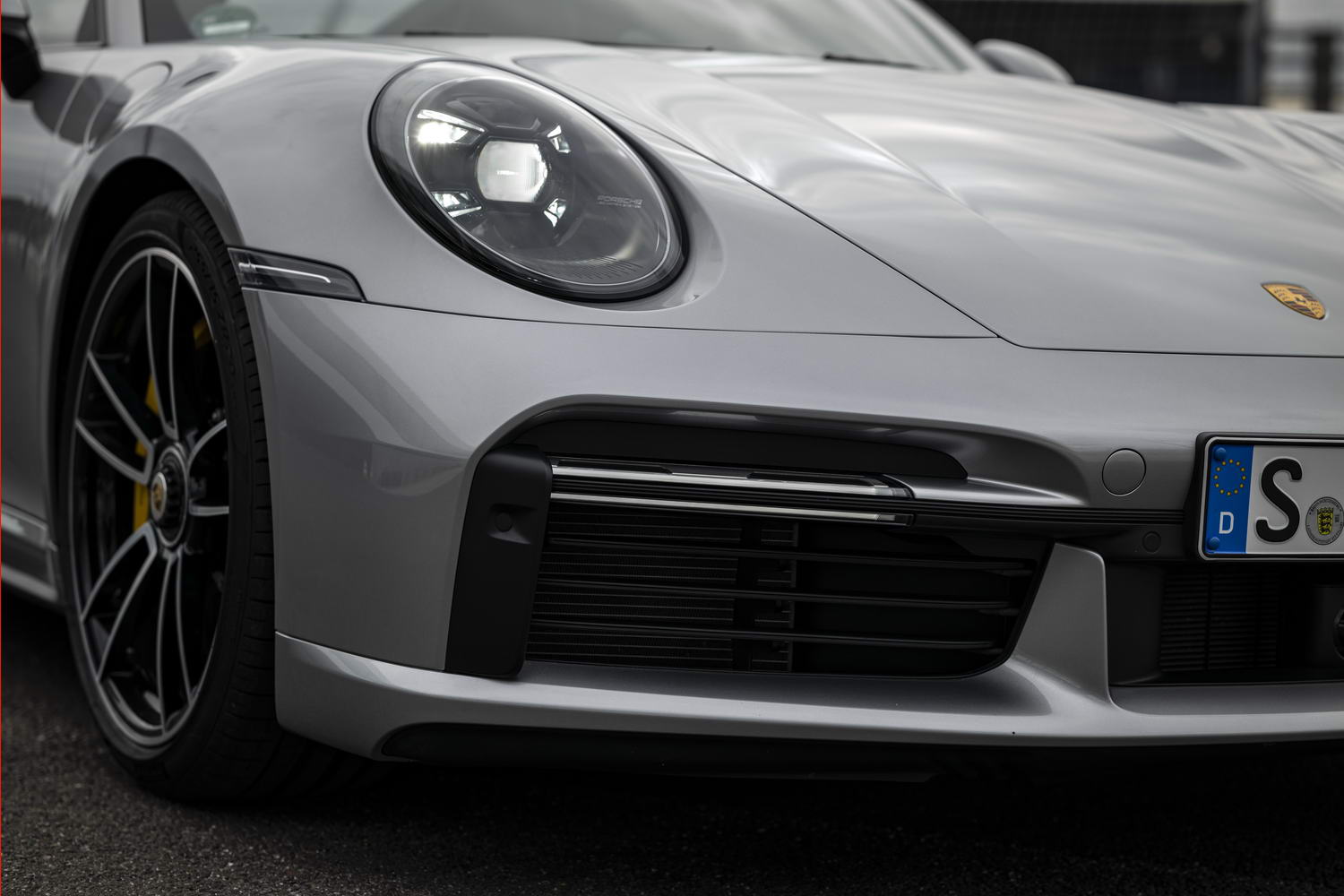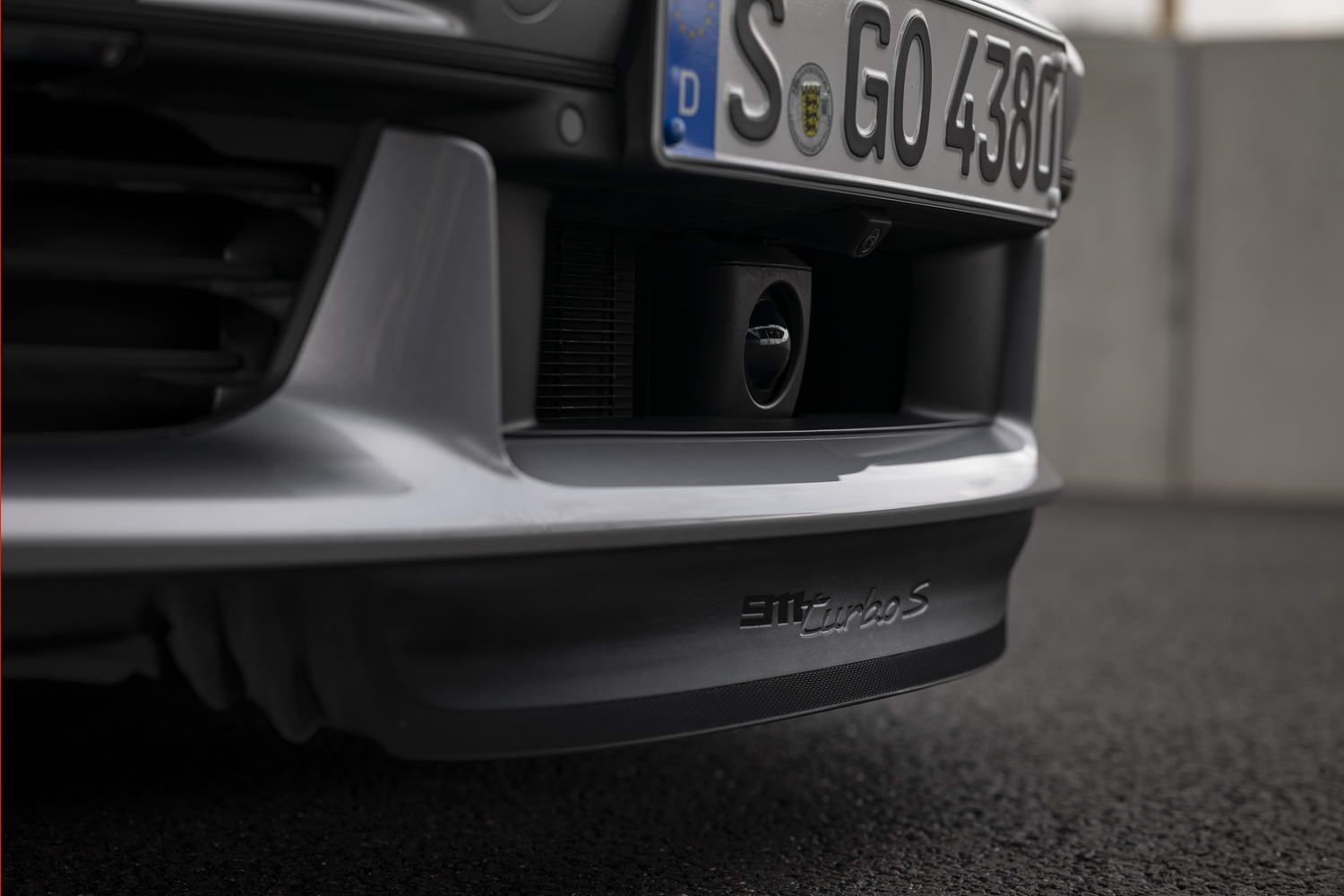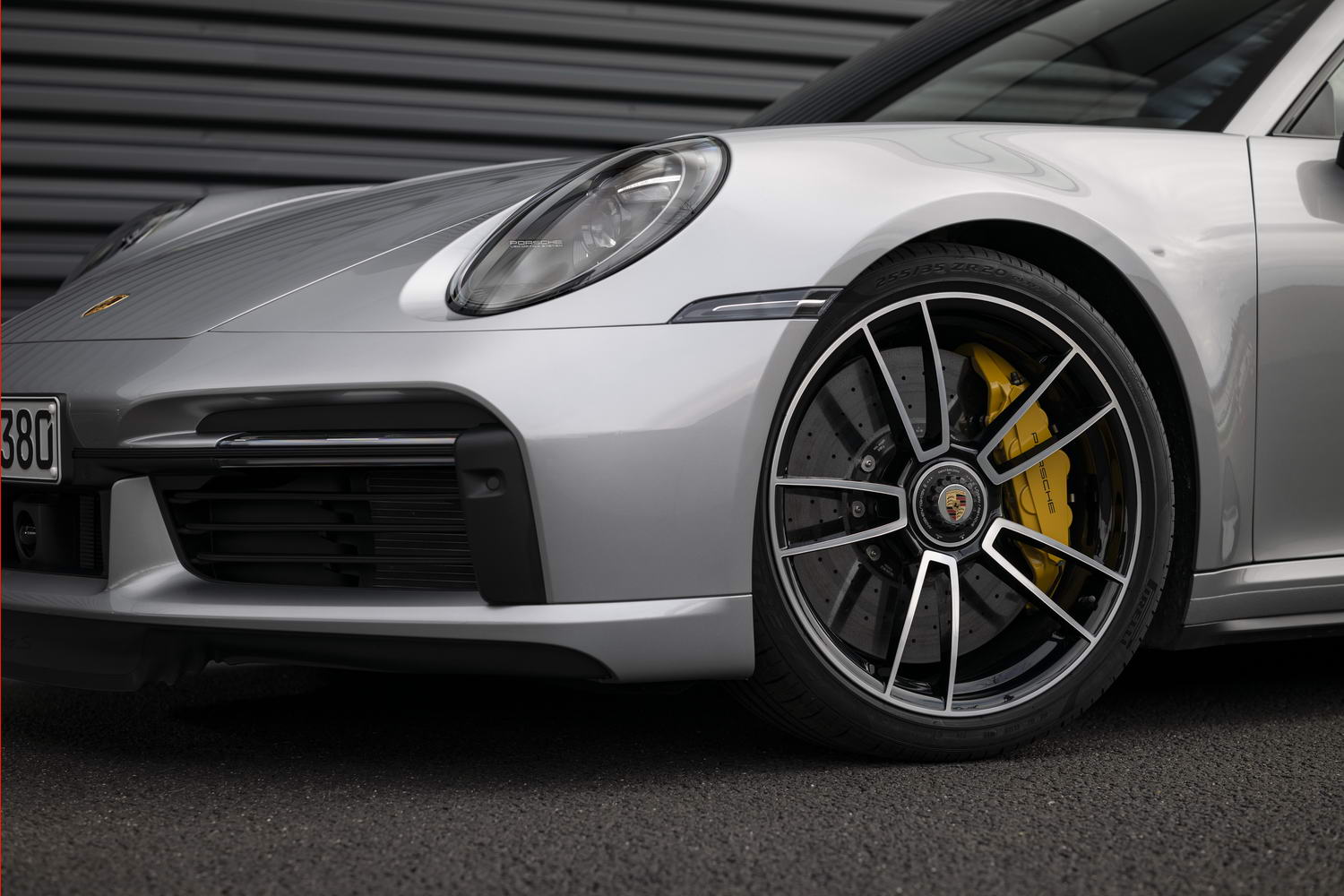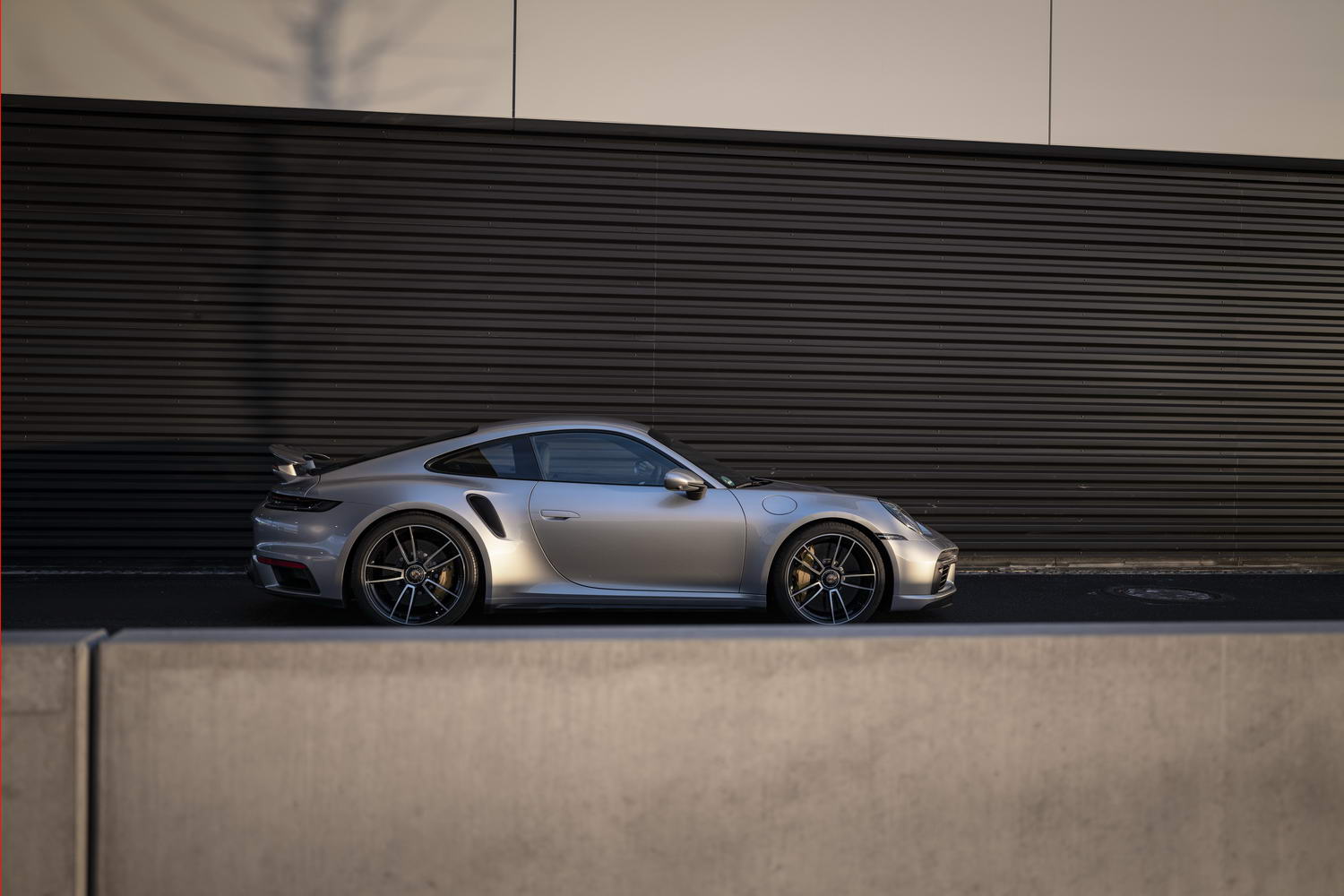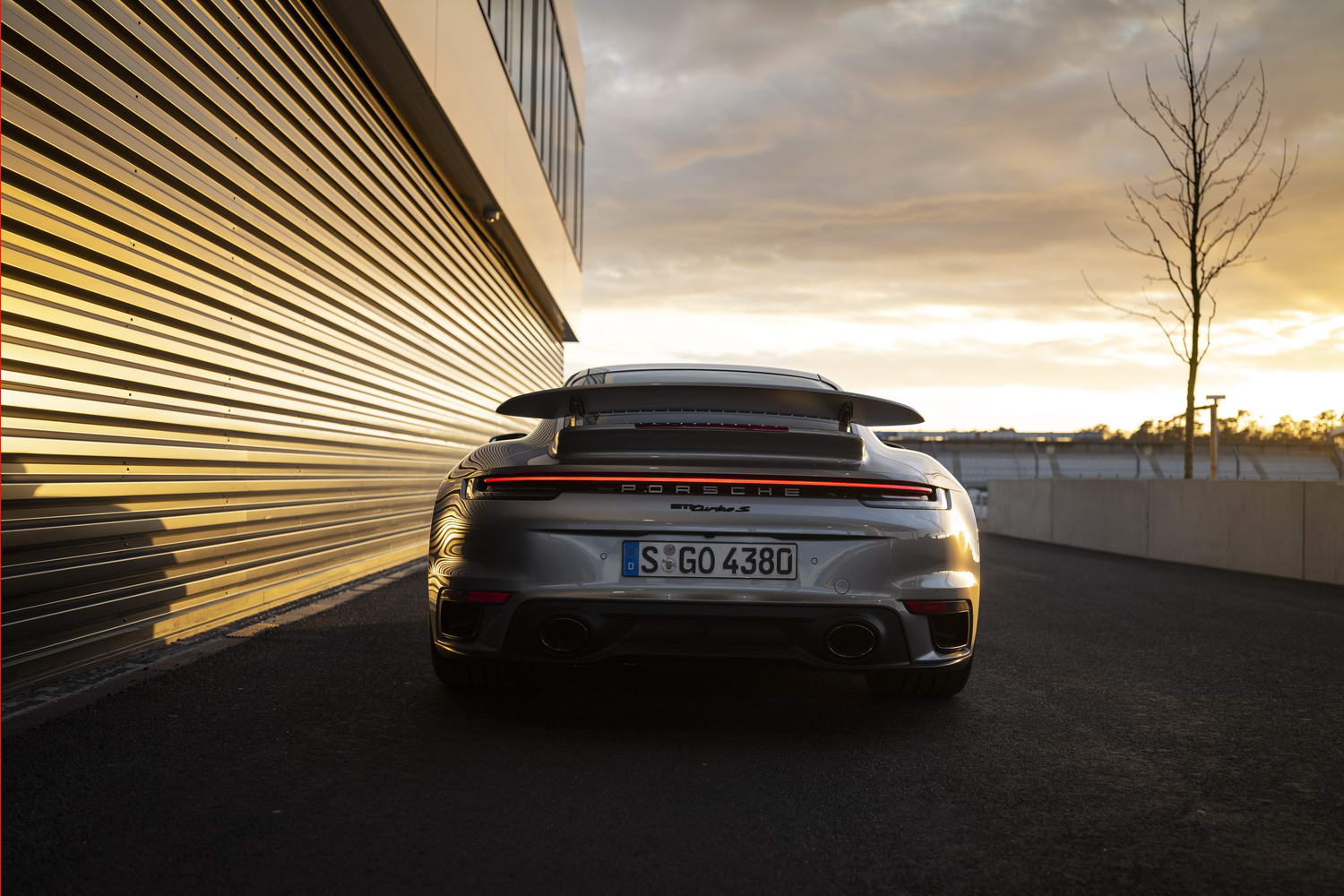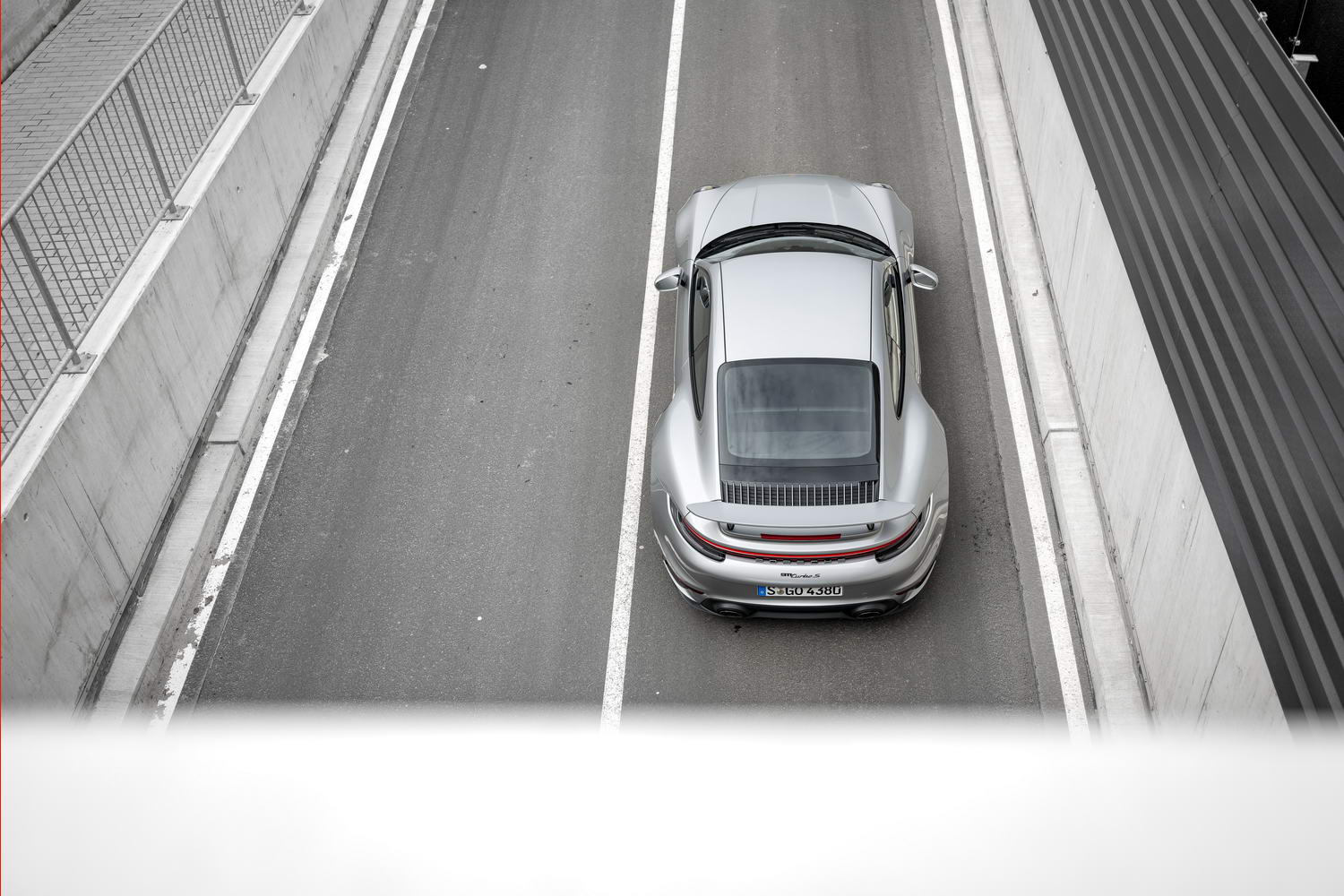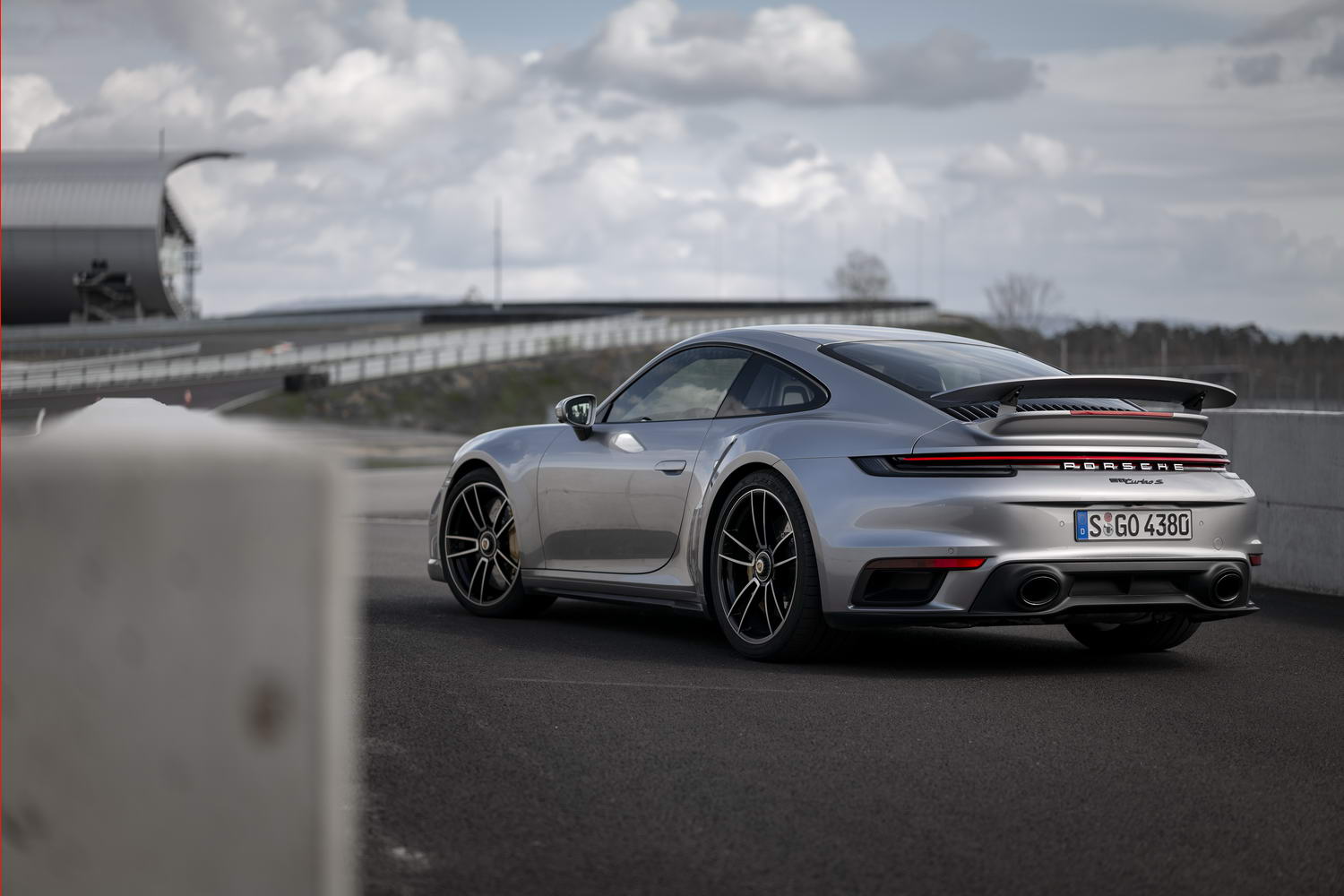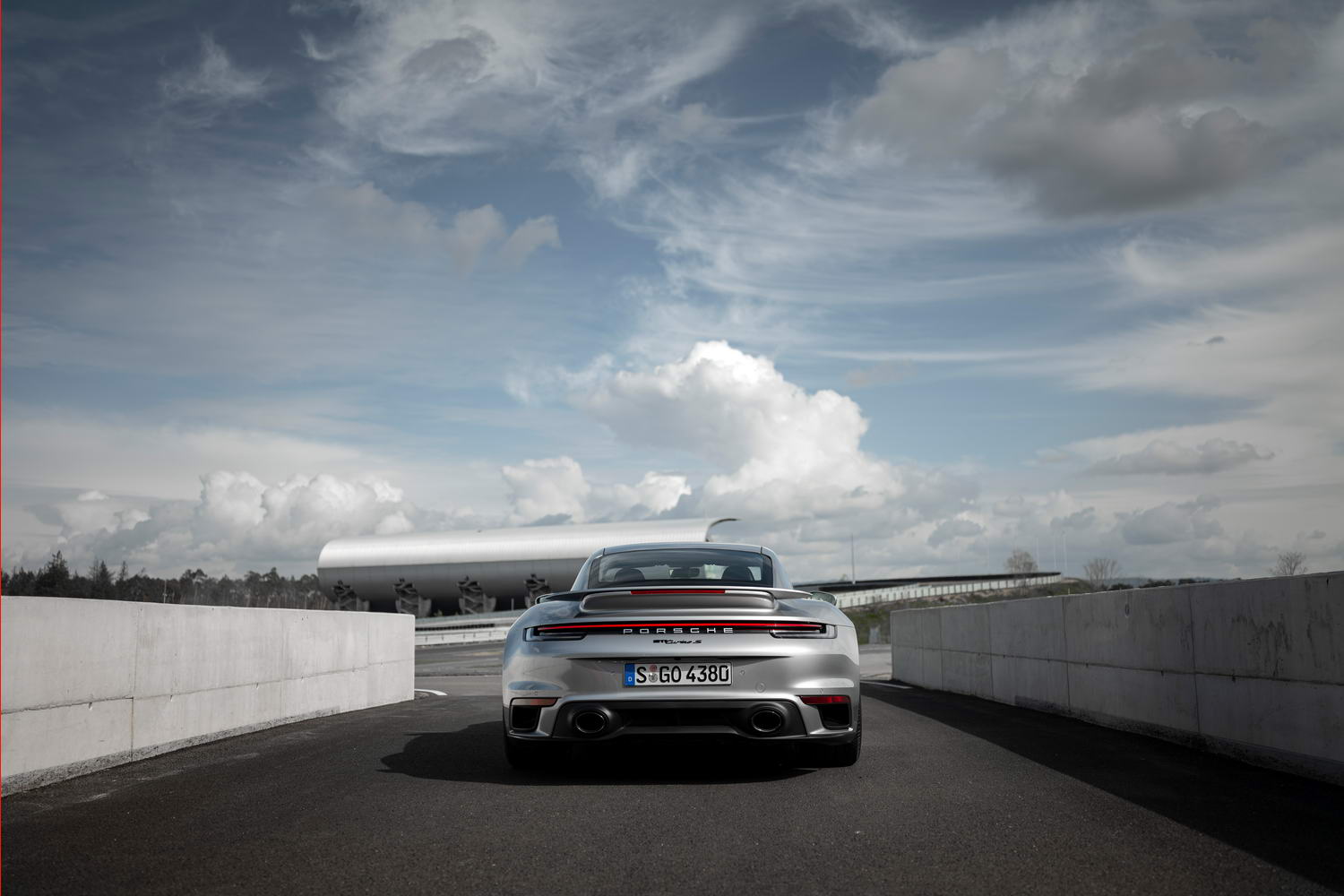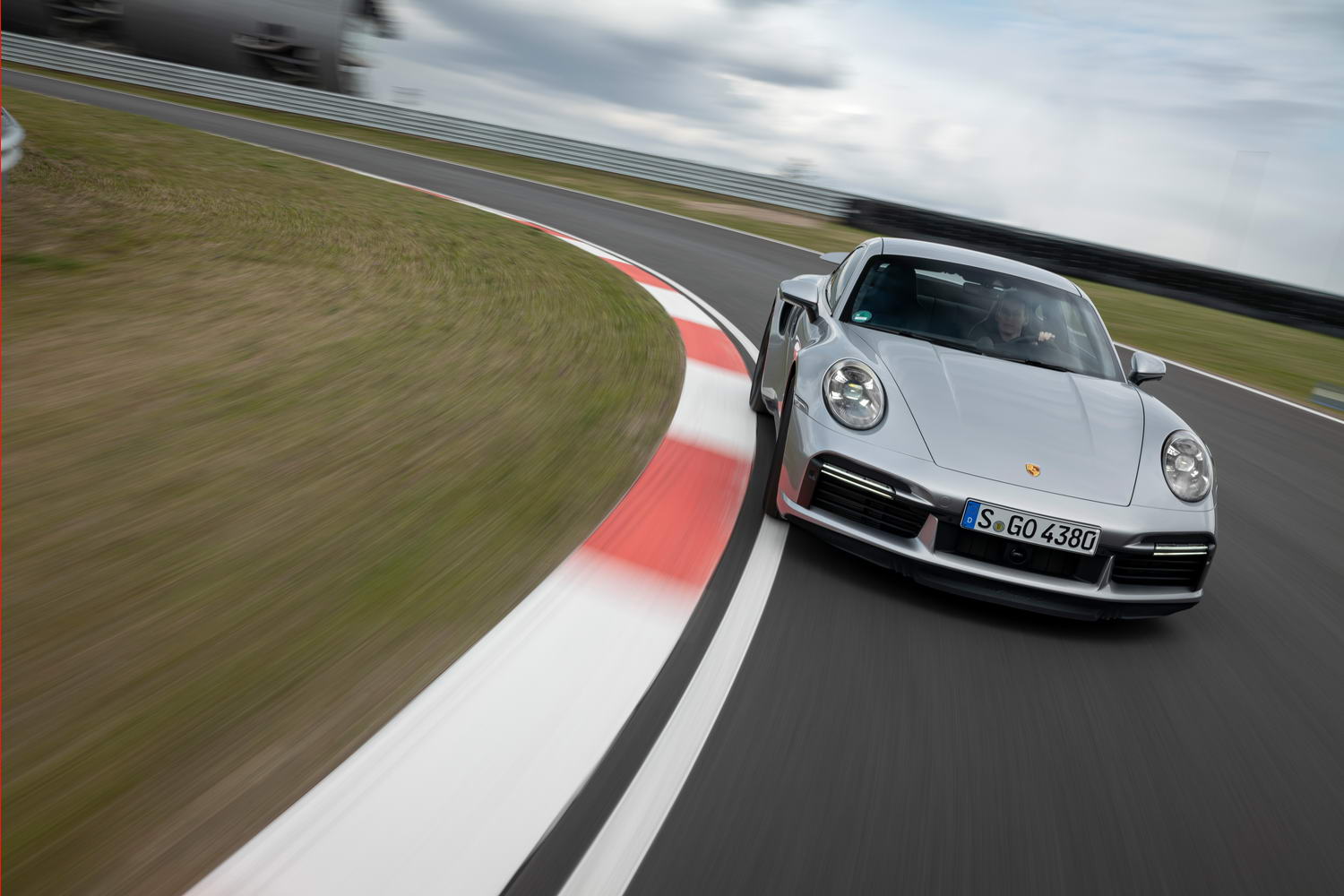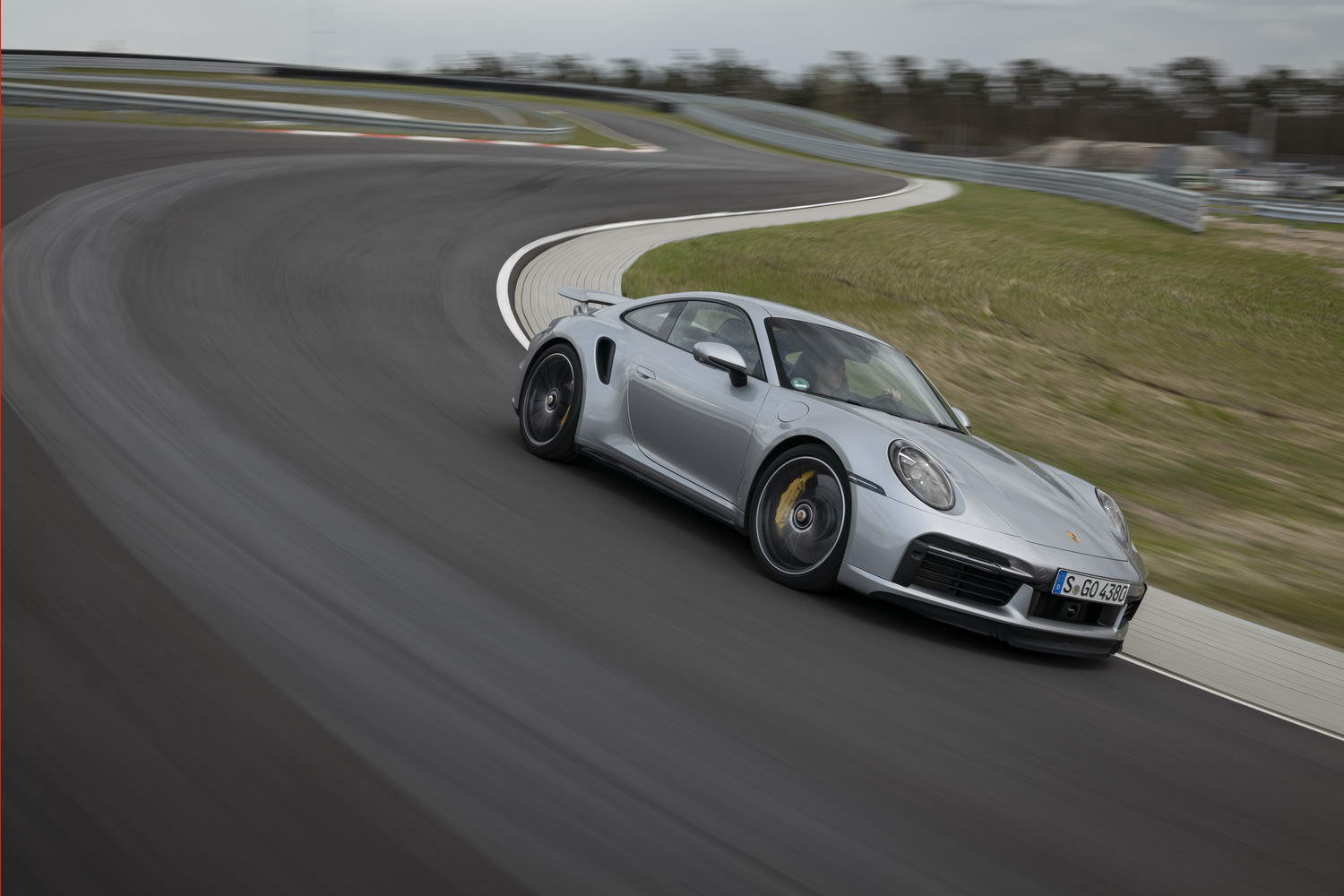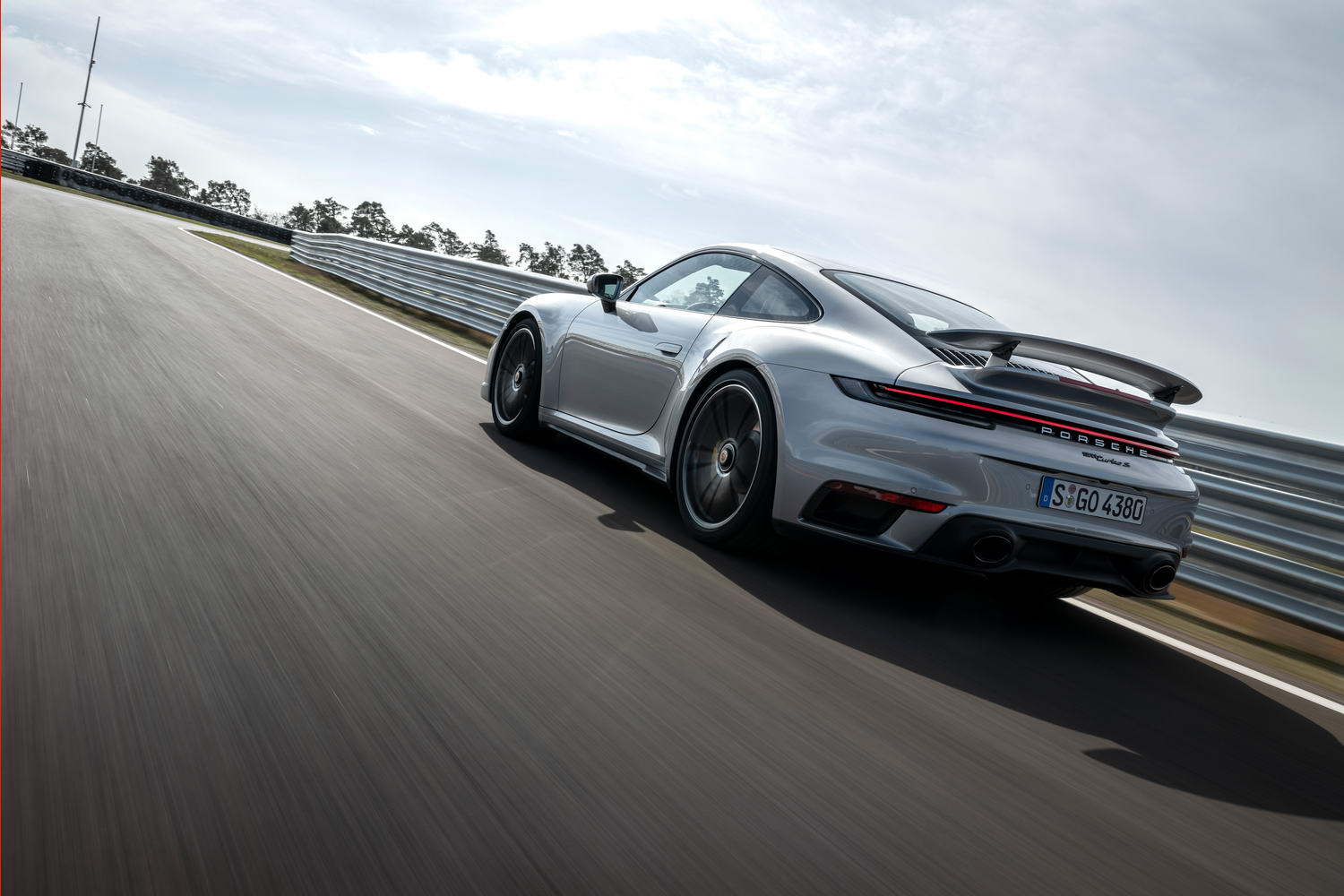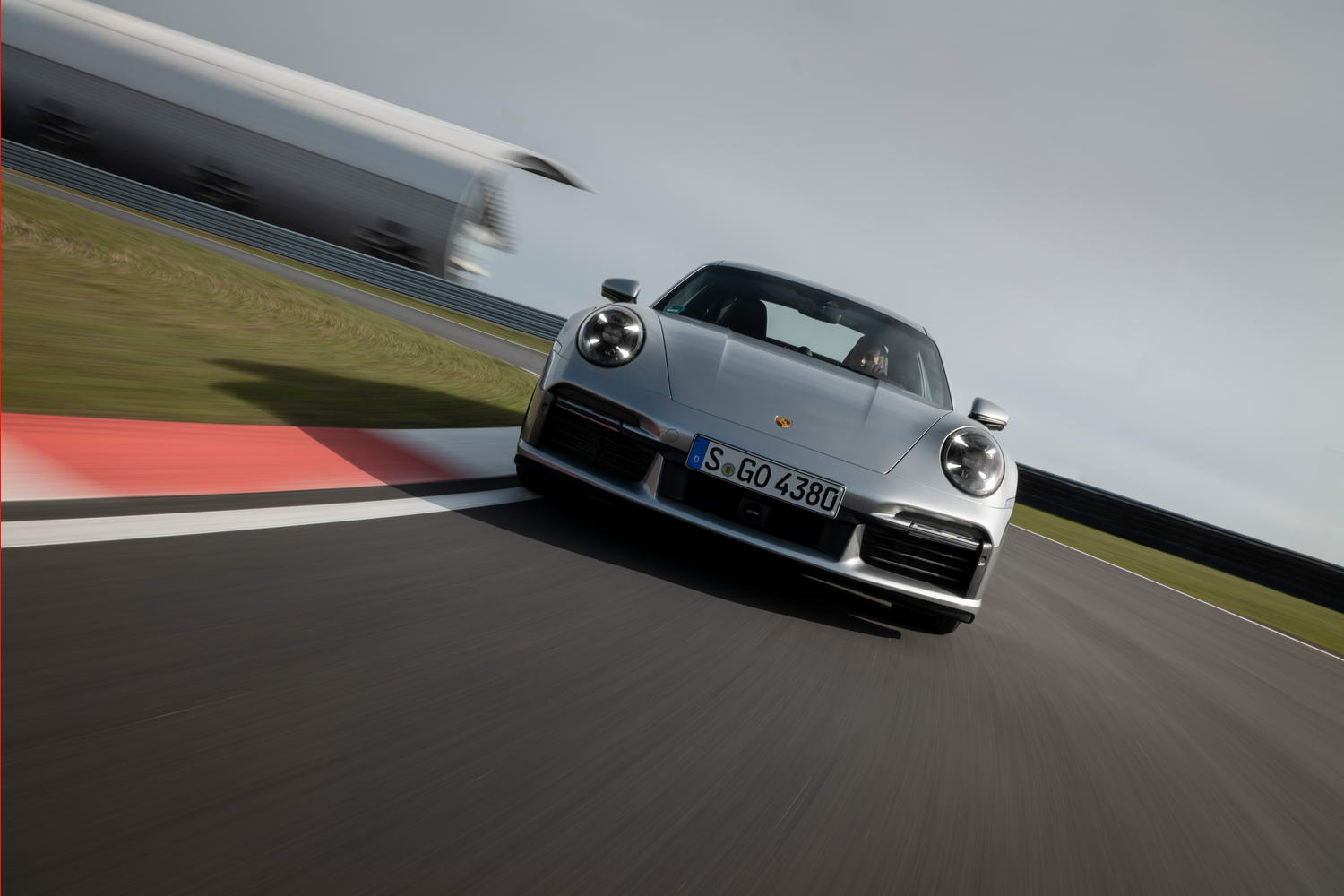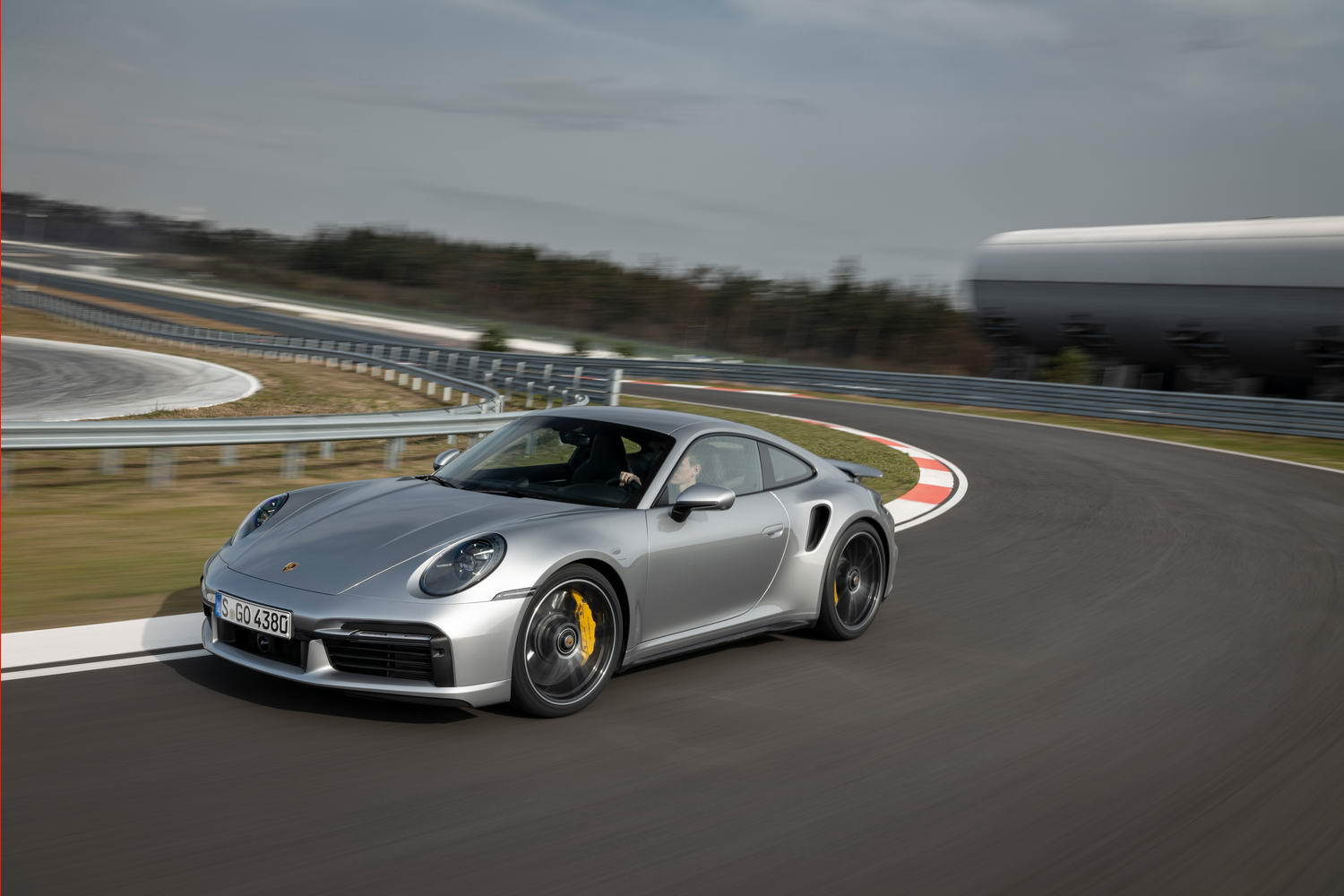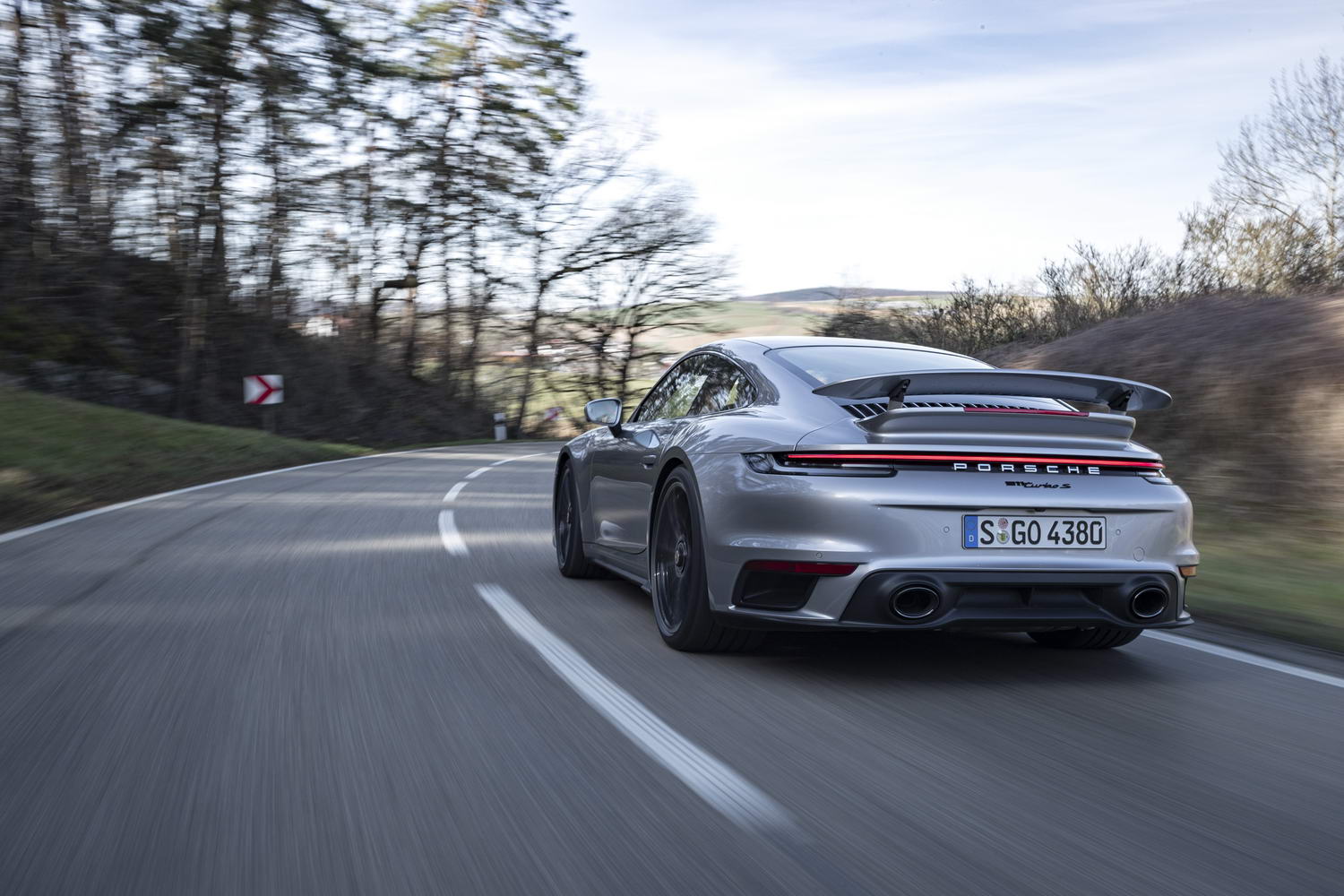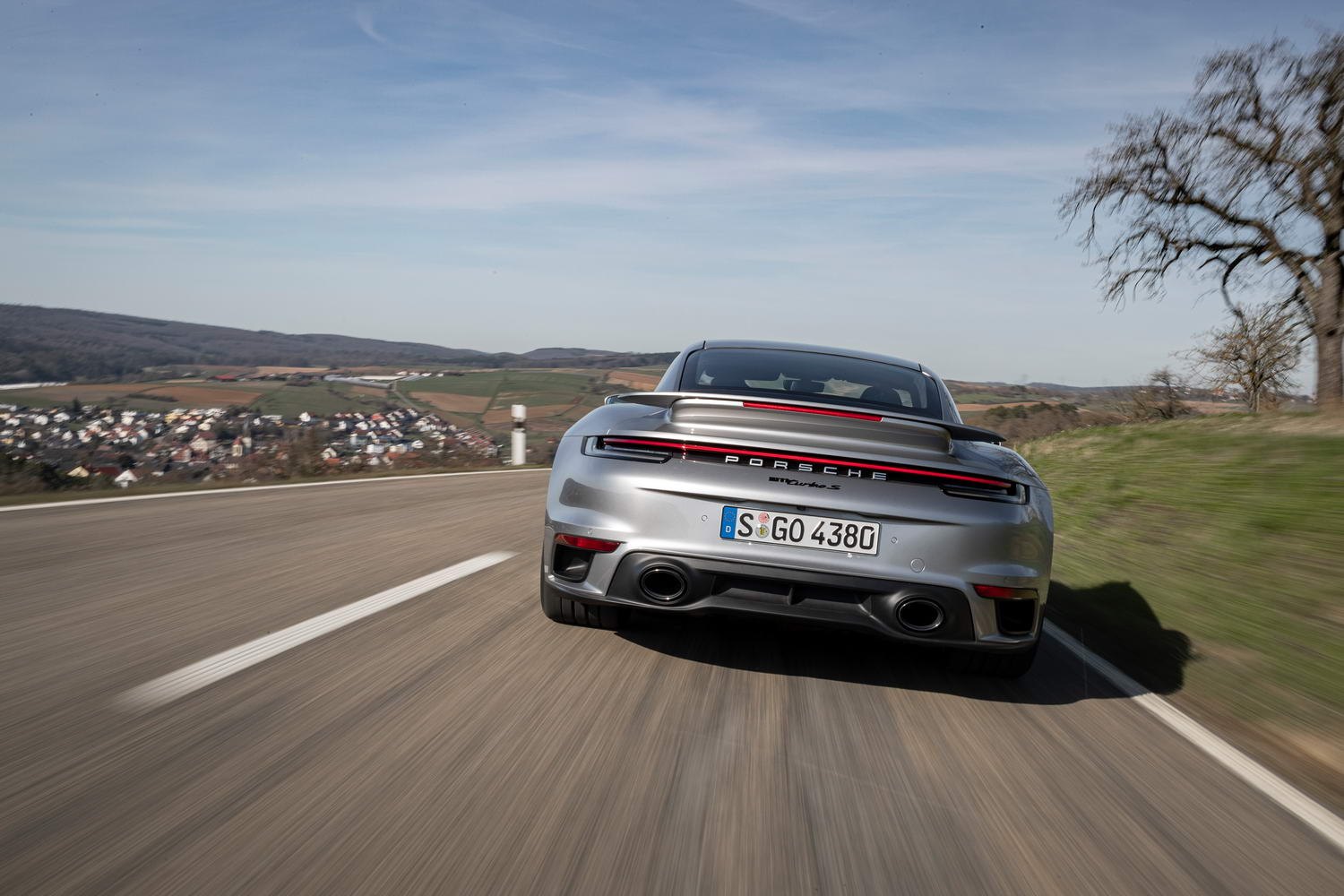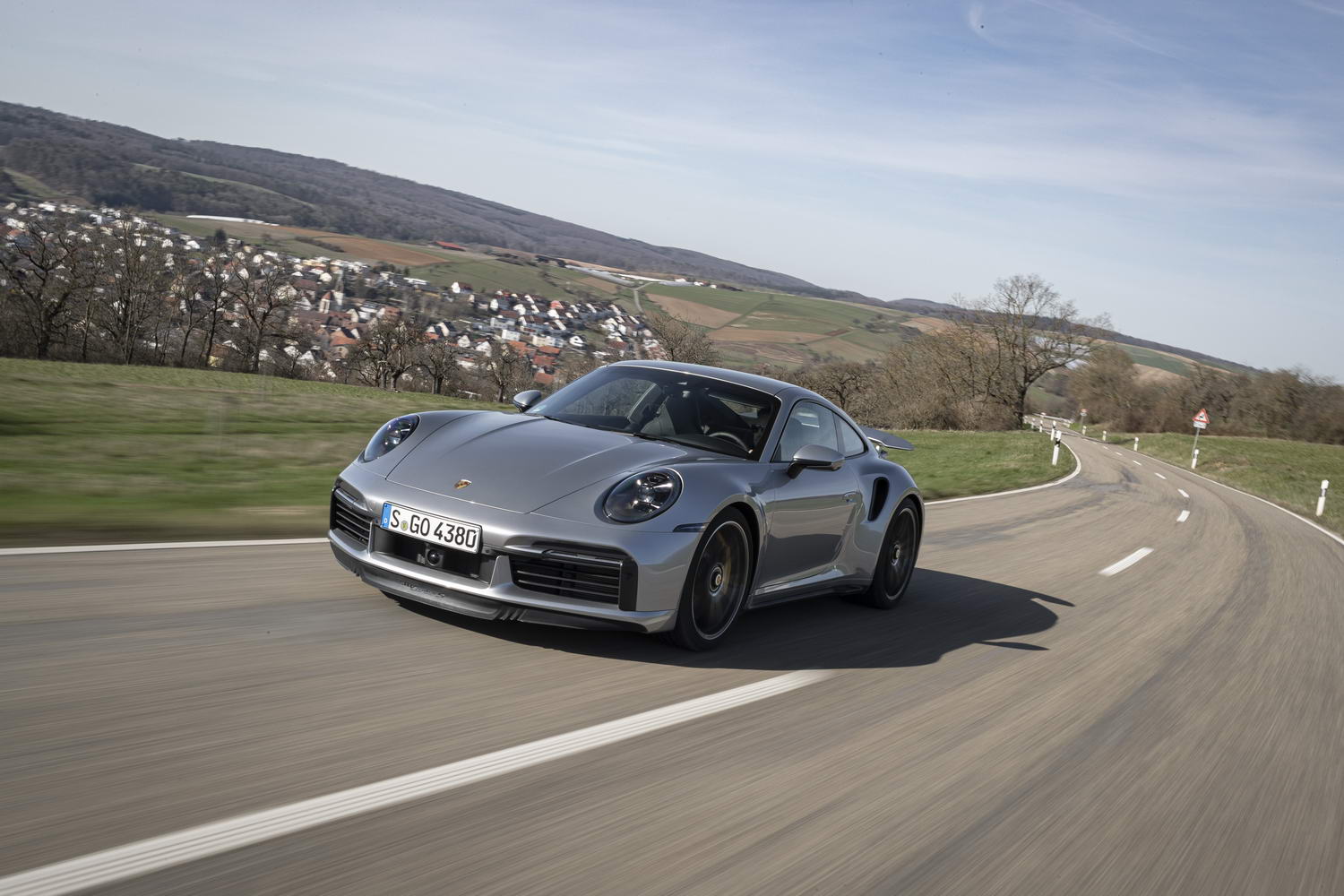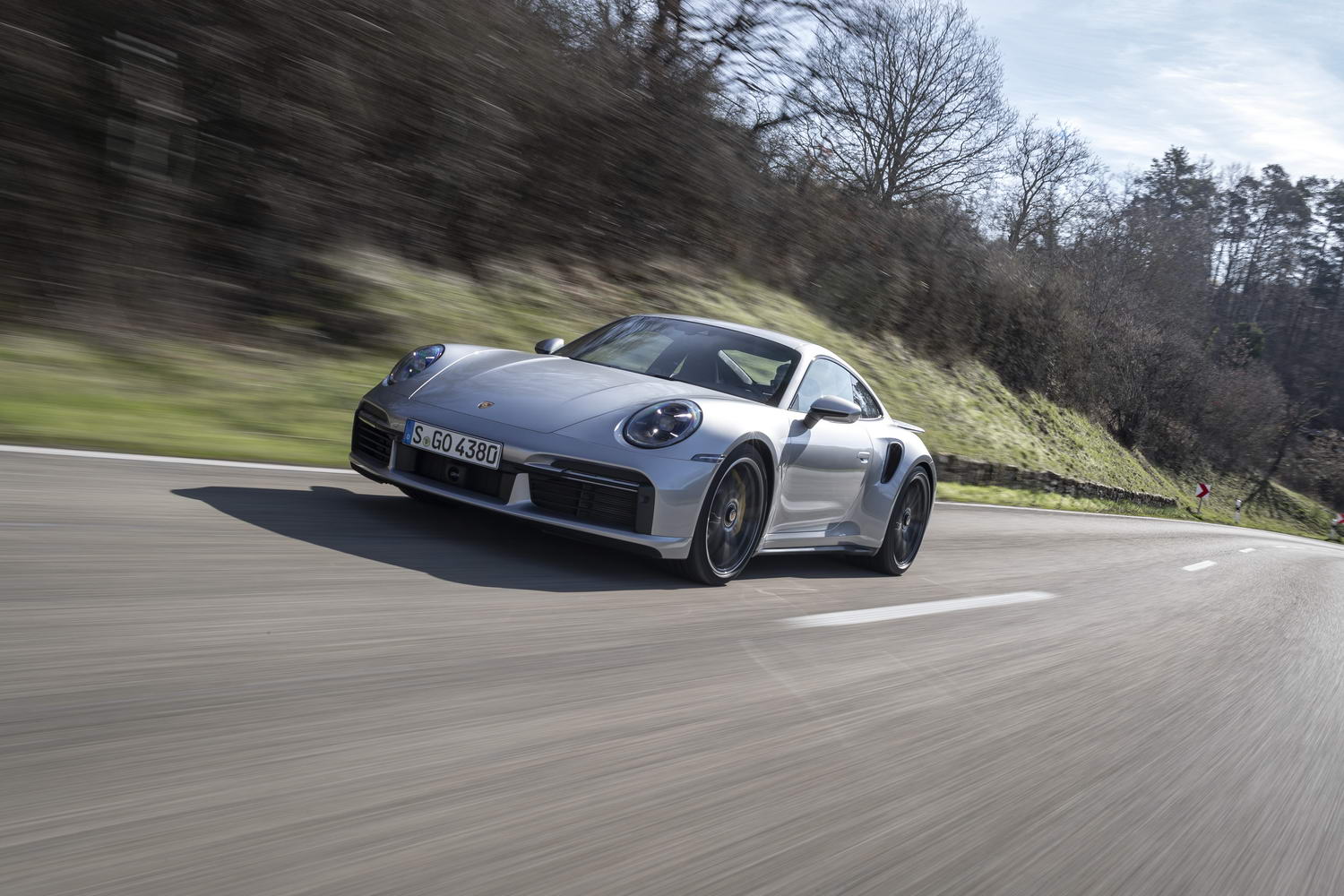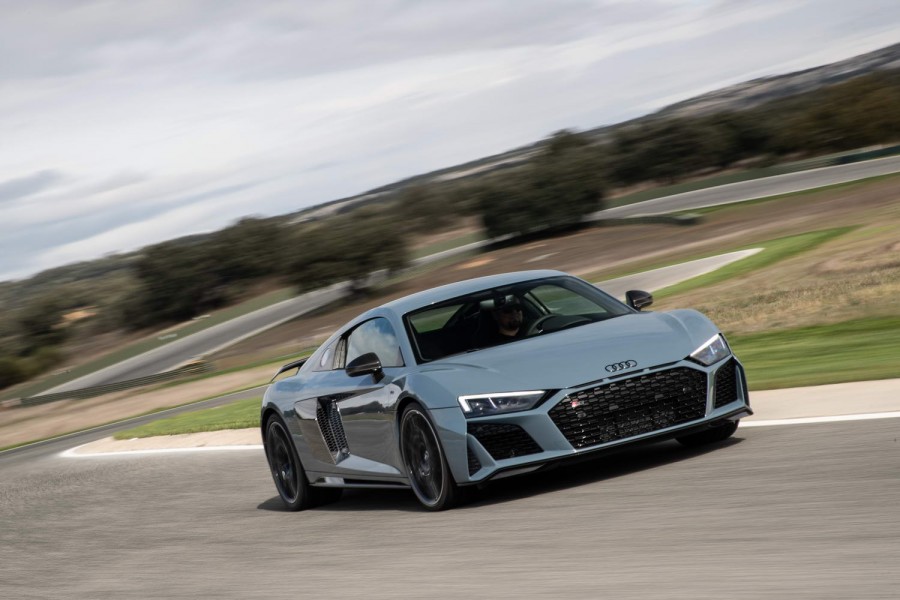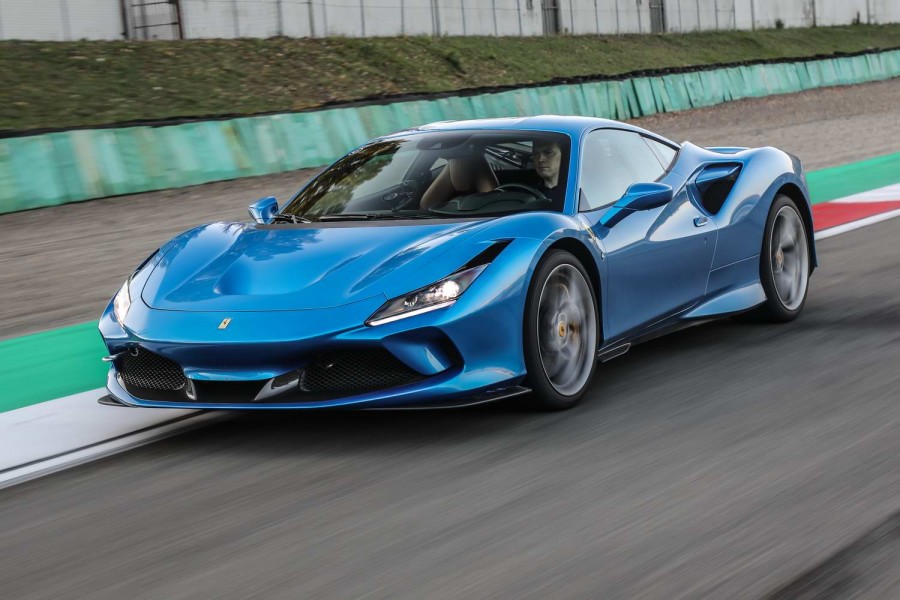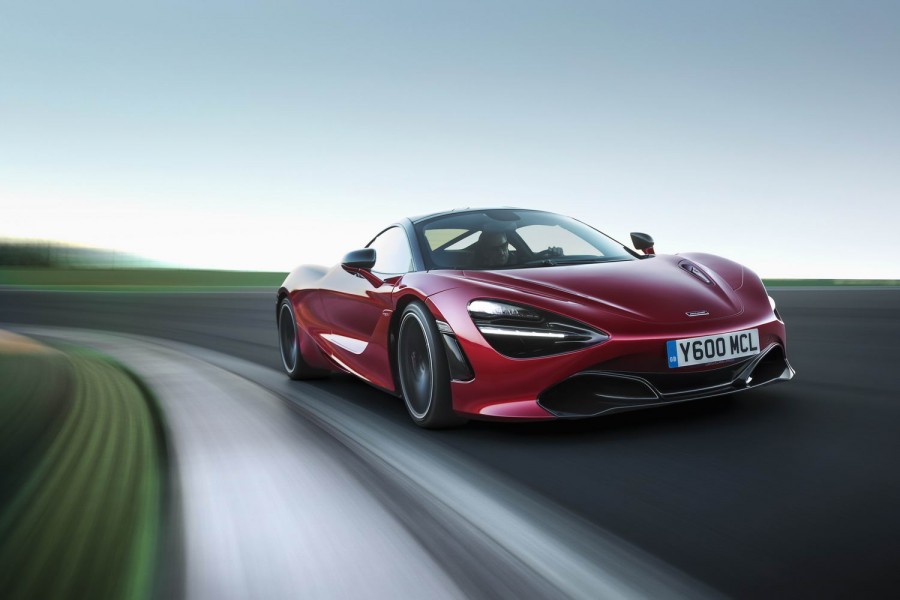The first of the mega-performance derivatives of the 992-generation Porsche 911 appears and it's the all-wheel-drive Turbo S that breaks cover. They say absolute power corrupts absolutely, but is that strictly true in the case of this 650hp super-coupe?
In the metal
The unwritten rule in 911 lore is that the Turbo (with a capital T, which denotes the difference between this 650hp twin-turbocharged model and the 385hp twin-turbocharged entry-point to the 992 canon) has a fatter, wider body than what you'd find on an equivalent-era Carrera 4S. And so the legend has once again come to pass for this latest ultra-911.
Look at the 992 Turbo S! Look at it! Have you seen many more aggressive cars than this? Its big, blistered haunches and flared front wings hide track widths that are 10- and 45mm respectively wider than they are on a Carrera S. That much broader front track will take on more significance when we come to the driving impressions, but beyond the steroidal stance, the 992 Turbo S has two air intakes just forward of its rear wheels, it has what looks like a fixed, large rear spoiler and it runs on 20-inch front, 21-inch rear alloys that are shod in colossal 255/35 ZR20 and 315/30 ZR21 tyres. Even from a distance, it is unmistakeably the lunatic evolution of the 992. And we love the Turbo's look unreservedly.
Of course, that rear wing isn't fixed - part of it extends upwards when the 992 Turbo S is in Sport Plus mode, to reduce lift at the back of the car. A similar thing happens under the Porsche's chin, where a splitter folds itself down into view and these two features, as well as opening/closing air vents and additional cooling channels in the grille above the Turbo's rear-mounted engine, are part of a suite of active aerodynamics on the fastest 992 so far. Oh, and we're talking more about the exterior here, because the interior is the usual current-gen 911 brilliance, with only a few Turbo-specific enliveners - such as a Guards Red rev counter (if you opt for the Sport Chrono pack, you can have the dash-mounted timer in the same colour), a two-tone leather package that mimics the chequered seat trim of the original 1975 '930' Porsche 911 Turbo and some decorative stitching. That's not to detract from the 992's cabin in general, though, which is an exquisite place to spend some time.
Driving it
The 911 Turbo has a strange reputation in the wider automotive world. On the face of it, it's the most devastating 911 proposition of all: looks like the regular sports car models elsewhere in the line-up, has all the ease-of-use and 'relative' practicality of Porsche's icon in relation to other supercars out there, corners and goes like a heat-seeking missile strapped to a quartet of Pirelli P Zeros. And yet, to the diehard enthusiasts and Porsche-philes, the Turbo is not the 911 of choice; the likes of the GT3, GT3 RS and GT2 garner the principal critical acclaim, and the Turbo is denounced as the one to go for if you're a poser.
Porsche, though, clearly wants this Turbo to be different. It has equipped it with every technological chassis trick in the book, in order to help the 911 cope with the rampant power and torque (650hp and 800Nm) that the rear-mounted 3.7-litre engine can deliver. And no, we've not gone and committed a grievous misprint - Porsche might call the Turbo S's flat-six a 3.8, it might even go so far as to print a little '3.8' graphic in italic script on the top of the engine cover you can see when you pop the car's engine lid, but with a swept capacity of 3,745cc it's a 3.75 at best and, correctly, must be 'rounded down' to 3.7 litres. Slight digression: the engine in the Turbo S is, once again, the 3.0-litre 9A2 Evo unit from the 992 Carrera and Carrera S models, but bored out (the stroke remains the same) to enlarge the capacity and then fitted with a larger pair of variable turbine geometry (VTG) turbochargers, as well as piezo injectors and upgraded twin intercoolers. It is not the old 991.2's 3,800cc engine, refreshed for the 992 outing. That's why it has significant gains of 70hp and 50Nm over the 991.2 Turbo S.
Anyway, back to the chassis. Quite aside from the immense mechanical grip those foot-wide-plus rear tyres will proffer up, you get the following on the 992 Turbo S without having to tick any options boxes at all: Porsche Traction Management (PTM) all-wheel drive with the Porsche Torque Vectoring Plus (PTV Plus) electronically controlled differential lock on the rear axle; Porsche Stability Management (PSM) with ABS and extended brake functions; Porsche Active Suspension Management (PASM) switchable damping; Porsche Dynamic Chassis Control (PDCC); dynamic engine mounts; Porsche Ceramic Composite Brakes (PCCB) with ten-piston front and four-piston rear callipers, gripping massive 420mm front and 390mm rear discs (those front rotors being bigger in diameter than the 16-inch Fuchs wheels fitted to the original 930 Turbo); and electromechanical power-assisted steering with variable steering ratio and a steering-pulse generator.
There's much more available as options for the Turbo S, like a carbon-fibre roof to lower the centre-of-gravity and a 10mm-lower sport suspension option for the PASM, but whether you select extra-cost items or not, what you have here is an incredible car. Thanks to the lightning-fast eight-speed PDK gearbox and very little turbo-lag (there is some, but it's not present in terminal amounts), the 992 Turbo S is simply outrageously quick in any scenario you care to present it with. In-gear acceleration? Ballistic. High-speed roll-on pick-up? Terrifyingly muscular. Neck-snapping, swear-out-loud-involuntarily step-off launch characteristics? Check.
It's just a quick, quick, quick car, outstandingly so, and that's in an age when the instant-access torque of electric vehicles (EVs) is prevalent - nowhere more so than with Porsche's own devastating Taycan relation. The Turbo S even sounds excellent; maybe not GT3-esque, getting the hairs on the nape of your neck to stand up, but as it homes in on the 7,000rpm redline there's a metallic, hard-edged bark to the 3.7-litre engine's note, while the array of noises from the VTG turbos at lower revs is deeply appealing. Admittedly, our test car had the optional sports exhaust system and you'll know if this has been fitted because the 911 will have two oval finishers at the back of the car, rather than four square tailpipe exits.
However, monumental speed has never been something for which the 911 Turbo has lacked. Yet genuine handling finesse and a significant degree of driver interactivity have been less commonly cited as facets of the Porsche's make-up in the past. Well, you can stick them on the list now, because this is a hyper-rapid car transformed from a point-and-squirt merchant into something that truly rewards the keener driver. That 45mm-wider front track was designed to negate understeer and to make the 911 Turbo S feel more rear-biased, and it's a move that has worked wonders. The steering feel is far greater and more organic on this car than it was on the 991 Turbo models, while the Porsche conveys the sensation of dancing through corners, rather than steamrollering its way around them with little finesse and an over-abundance of grip and traction.
Not that you will want to oversteer the 992 Turbo S on public roads, but the way the back bobs around when you've got the car loaded up in corners makes this feel more akin to a 911 GT3 than anything else. It's not quite operating at that level, of course, as up to 500Nm of the torque will flow to the front axle when required, but there's an engagement level present here that should finally convince 911 Turbo naysayers to, ah, cease their naysaying forthwith.
It remains incredibly civilised on the flip side of its character, too. On a motorway cruise, there's a firm edge to the ride quality, which is inevitable when you've got 30-profile rear tyres on giant 21-inch wheels and a reasonably short wheelbase (2,450mm), but aside from possibly the McLaren 720S (see below) there are precious few competitors that can roll along with any greater dignity than the Porsche. With its plush cabin, comfortable seats, tech-laden kit list and impressive sound-deadening cutting out most things bar slightly excessive tyre roar from the rear rubber, it's easy to imagine the Turbo S fulfilling its duality of nature as a long-distance pseudo-GT as well as it does the ultimate machine to take apart any given road in the shortest possible order. Although we would say that an overall 18.8mpg (15 litres/100km) from 260km of 'lively' mixed-roads driving would perhaps limit its cross-continental capabilities a tad.
Overall, though, the 911 Turbo S is as it always was: an astonishing piece of engineering that somehow makes an inherently wrong-headed engine layout work brilliantly well, even when it's delivering massive amounts of power. What's changed here is that, on top of its everyday brilliance, it can now engage the keener driver like it never has before. Think of it as the one chink in the 911 Turbo's otherwise-impregnable armour having been sealed up, and you can see why we rate this thing so highly.
What you get for your money
Aside from the mighty engine and the chassis technology, the 911 Turbo S comes with items like keyless go, front and rear ParkAssist with a reversing camera, cruise control, Matrix LED headlights with Porsche Dynamic Light System Plus (PDLS Plus), a 12-speaker, 570-watt Bose surround sound system, dual-zone climate control and a GT Sport steering wheel, among much more. It has a well-stocked equipment list from the off, then, because it is the 911 flagship, and while it is not an inexpensive car at nearly €300,000 (the Turbo S Cabriolet is even more), vehicles at this level are priced similarly so the 911 represents acceptable value. It's also more practical than most of its exotic rivals, thanks to its 2+2 layout (Porsche obviously wants you to think of the rear 'seats' as the Turbo's de facto boot, because it actually cites a cargo capacity for the back pew of 264 litres).
Summary
Driving purists might think they're waiting for a 992 GT3 to come along to get the ultimate kicks from the current Porsche 911... and they might be right, because a rear-driven, normally aspirated 4.0-litre coupe with a 9,000rpm redline is next-to-impossible to ignore. But to overlook the 992 Turbo S as a mere product-planned inconvenience while they wait would be grossly erroneous. This 650hp 911 is magnificent - stupidly fast when you want it to be, suitably comfortable when you're not stretching the twin-turbo engine to the limit and as involving in high-speed corners as it is easy to manoeuvre deftly about town. It might seem daft to say it, but the latest 911 Turbo S could conceivably be the car that can do absolutely everything. Outstanding stuff from the German marque.

